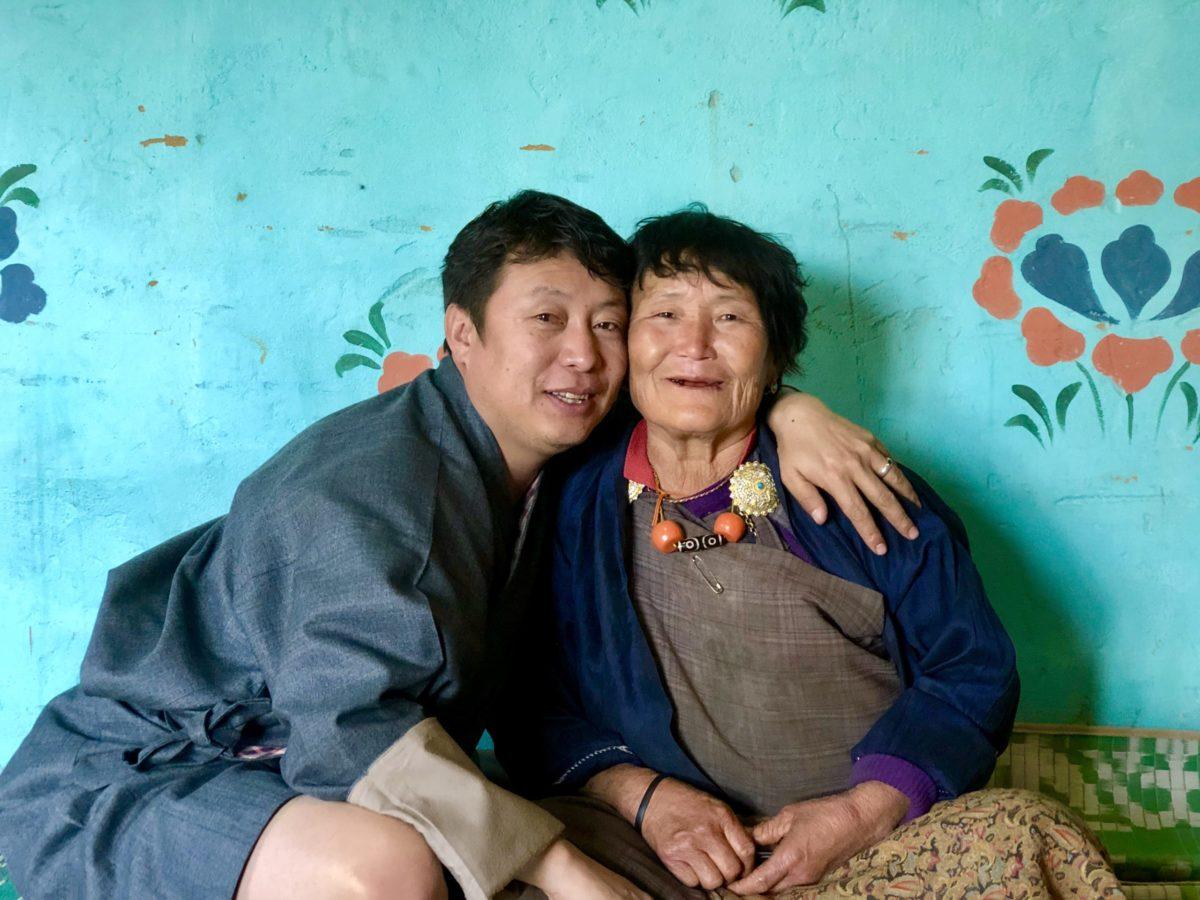
In Bhutan the annual blessing ceremony is a big gathering. The family puja usually happens in January – to Americans it’s something like Halloween, Thanksgiving, Christmas, and New Year’s all rolled into one. This year we all came to the family rice farm in Punakha. We spent three days celebrating, eating, praying, and playing. Only Lama D was detained in Nepal. This photo is from last year’s festivities.

I chased this beautiful rooster all over the farm for three days. But he ran away every time, following his hens and pecking at rice and grass. Finally on the last day he allowed me to take a photo of his magnificence. He may be the luckiest rooster in the world, with two hens all to himself, pristine air to breathe, unlimited food in this hillside domain, and a sublime view of the Punakha valley.
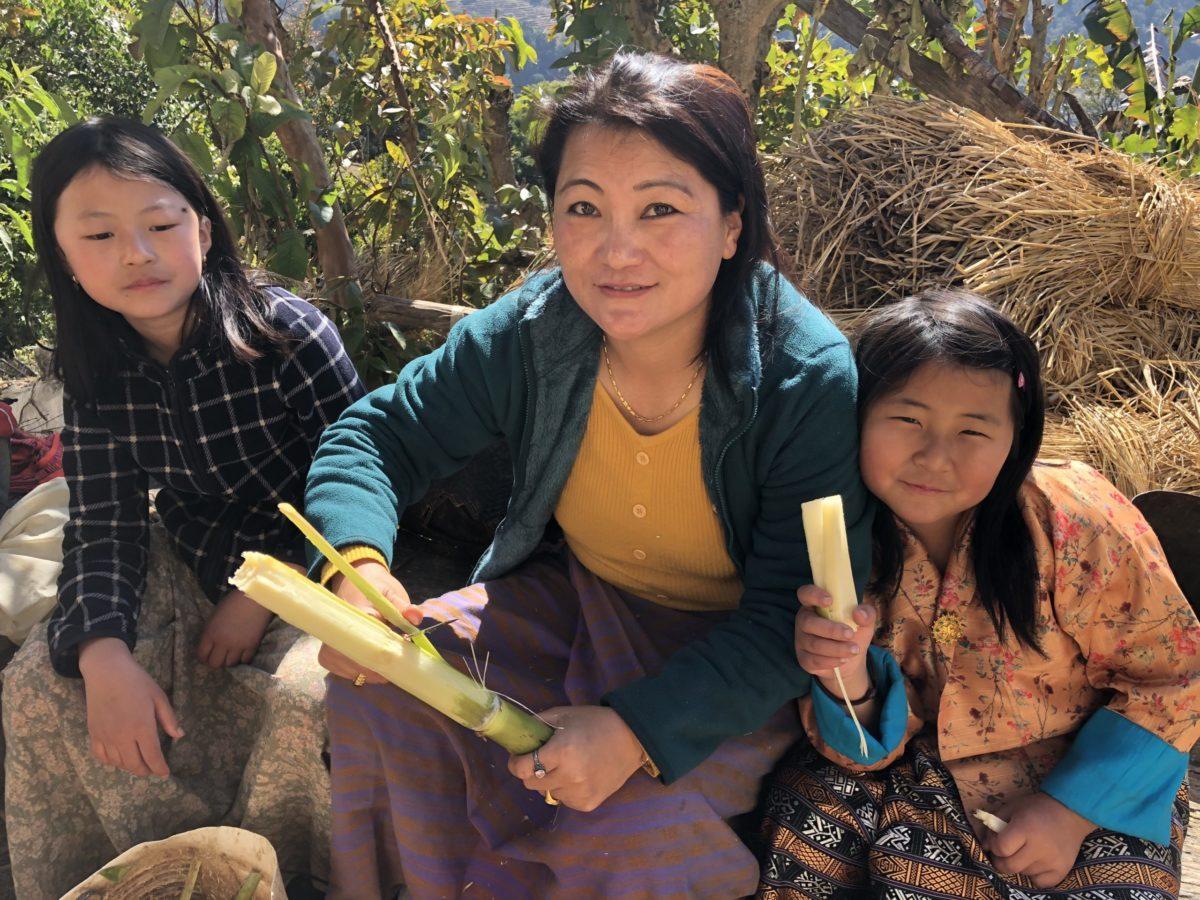
My sister-in-law Pema Lhamo is handing out sugar cane snacks from the garden. Yummy! Just peel and serve. I’m wondering, does this qualify as Paleo food?
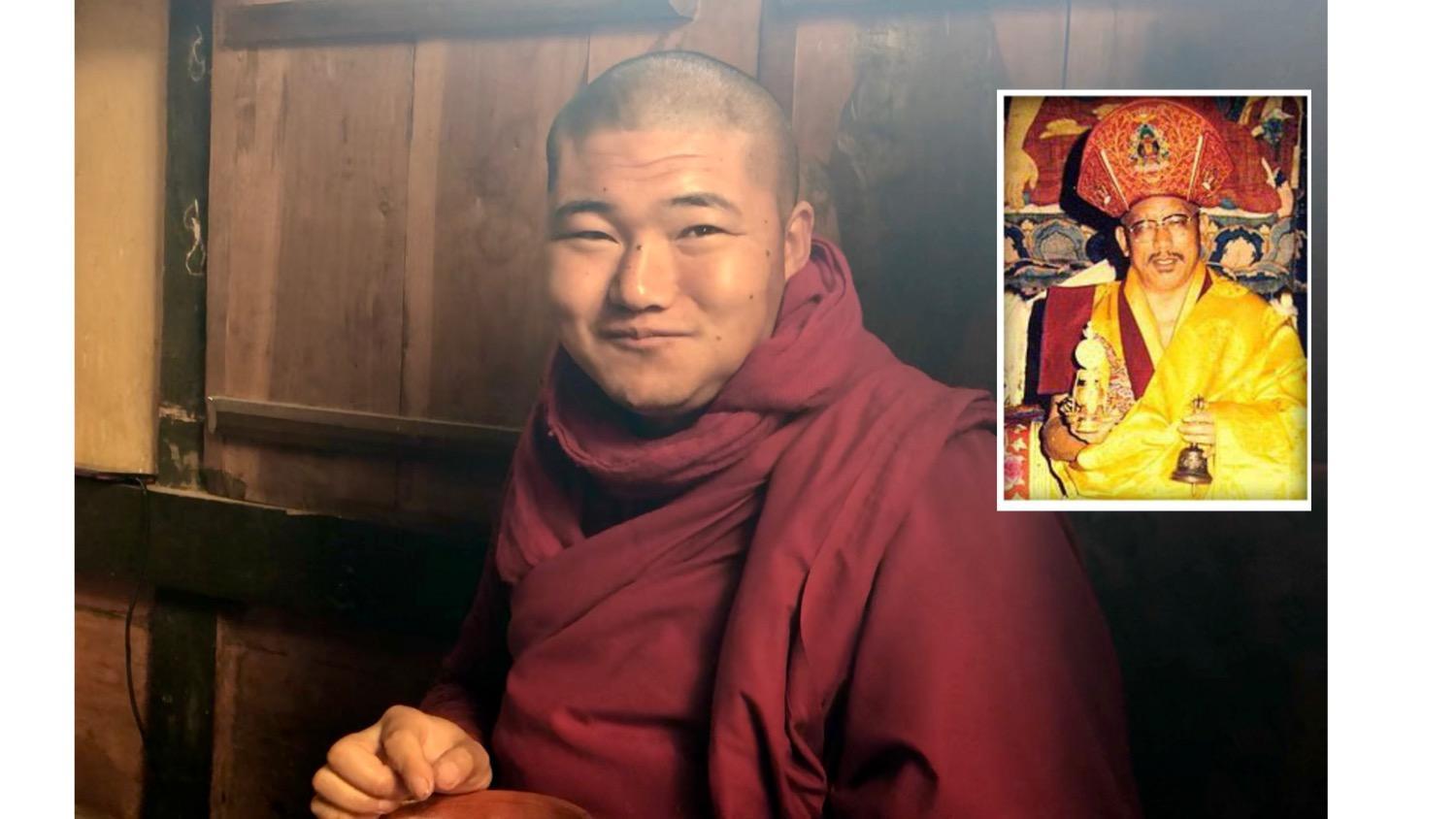
This is Lama Lopen Dorji. He teaches at the Tango Monastery in Thimphu and is a close a family friend of my Grandmother Rinchen Bidha’. Lama Dorji is the nephew of His Holiness Khenchen Ngawang Tenzin Doendrup, the 68th Je Khenpo of Bhutan. That means his uncle was the sacred head of all the monasteries and religious order of Bhutan. We were very honored to have Lama Dorji lead the family blessings, and to oversee the monks chants for these days.
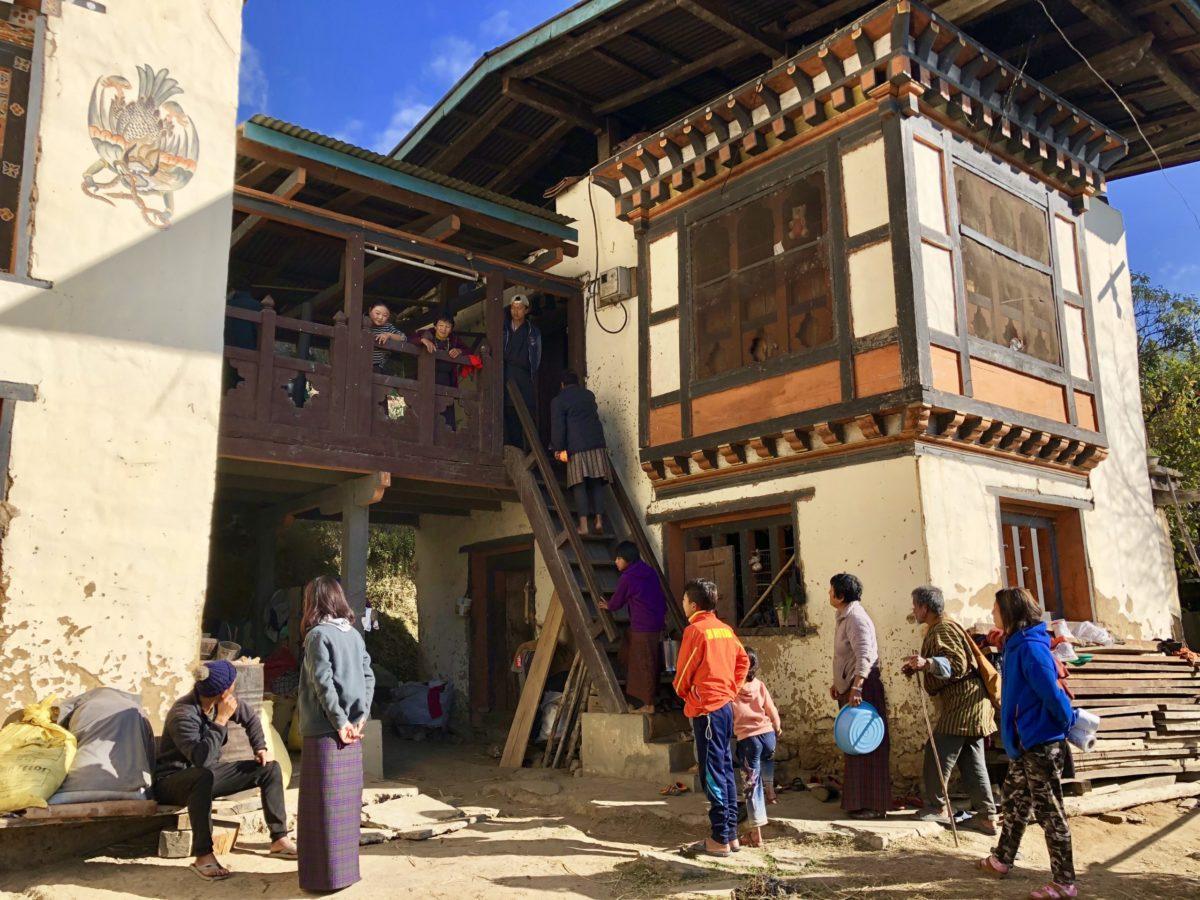
The front entrance of the farmhouse is a popular place to hang out. WARNING – the front stairs is NOT regulation height, as Bhutanese houses traditionally use extremely steep stairways. It doesn’t seem to be a problem for anyone, except for me going down to the facilities late at night can be a bit challenging.
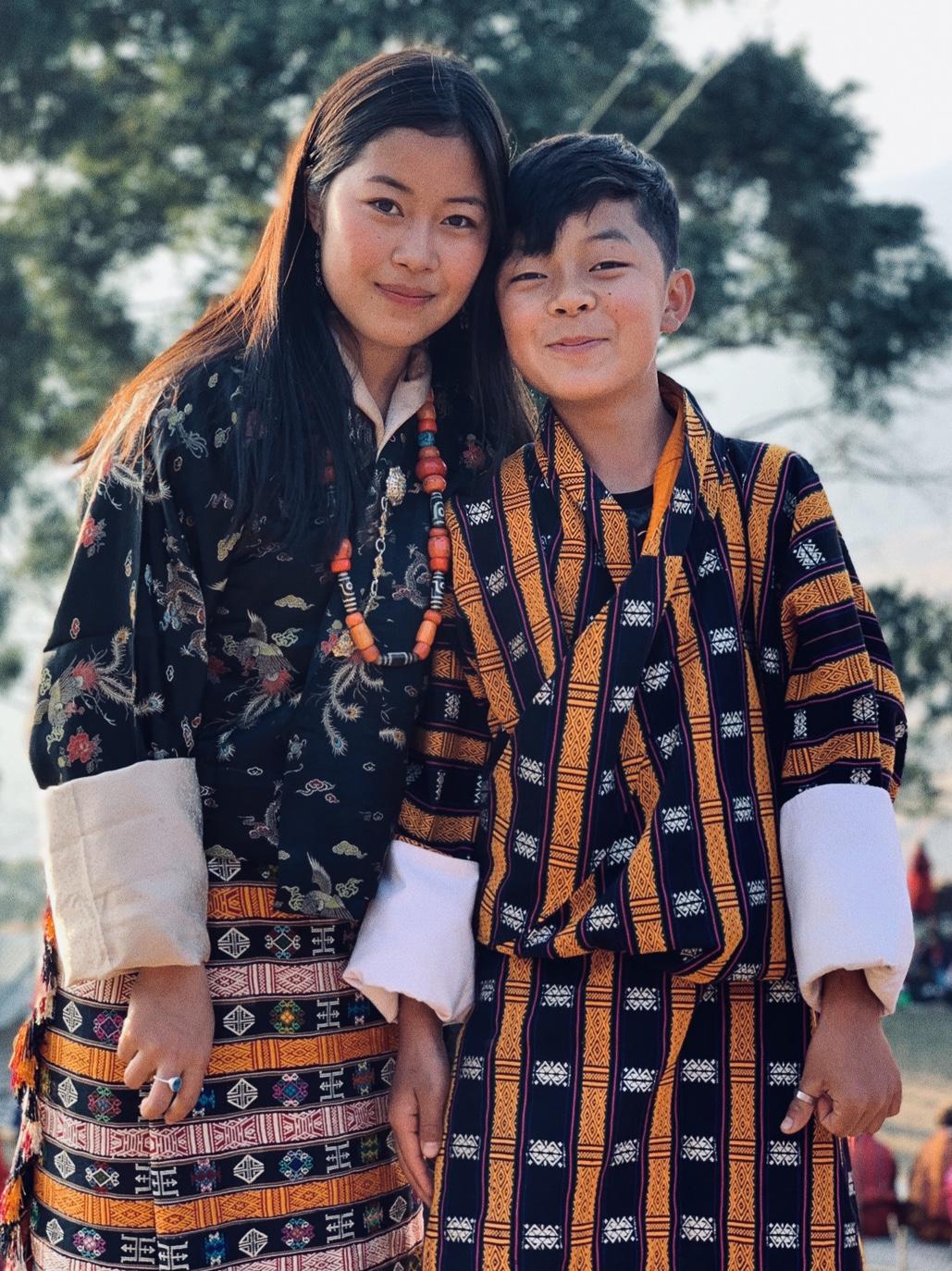
Two of Lama D’s children, Baby and Norbu, are all dressed up today. They’re my prize and champion English students. Like most children in Bhutan, they go to boarding school. Baby is applying to colleges this year.
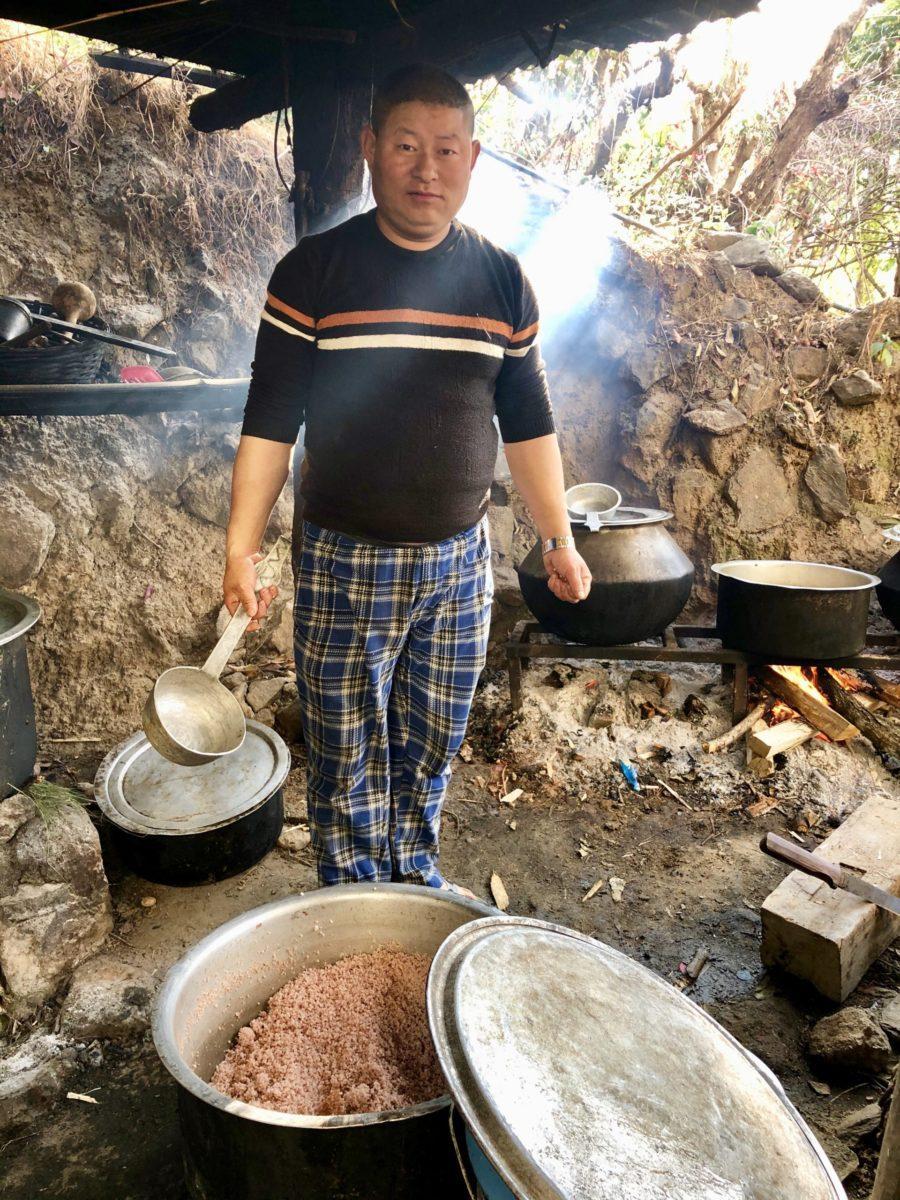
My brother-in-Law Phub Dorji is the head cook for the event. He works over four huge fires in the back of the house. There are about 30 hungry mouths to feed in the family, and there will be another 30 guests from the neighborhood. That means a LOT of red rice! Phub Dorji is the head of traffic police in the city of Paro.
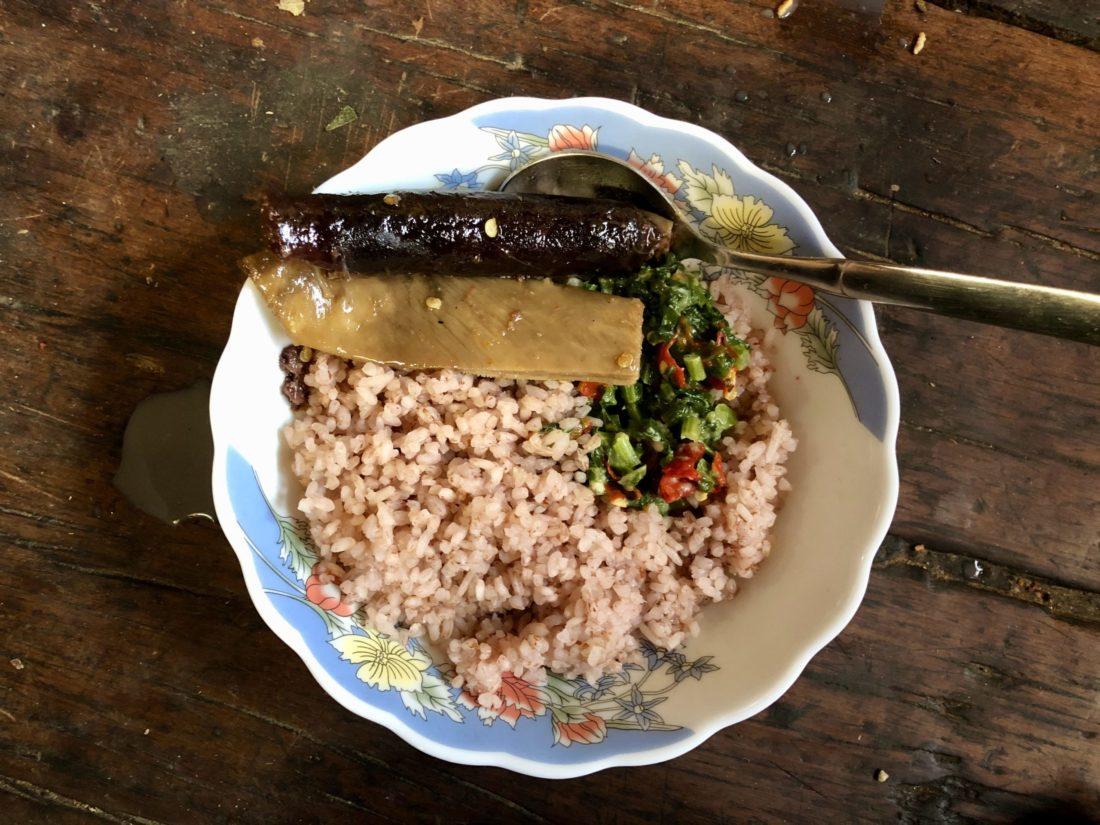
Today’s meal is red rice, beef sausage, tripe, and green veggies.

Lama D’s mother is busy with her nine cows in the stable. She prepared a cup of freshly boiled milk for me, a gesture of love.
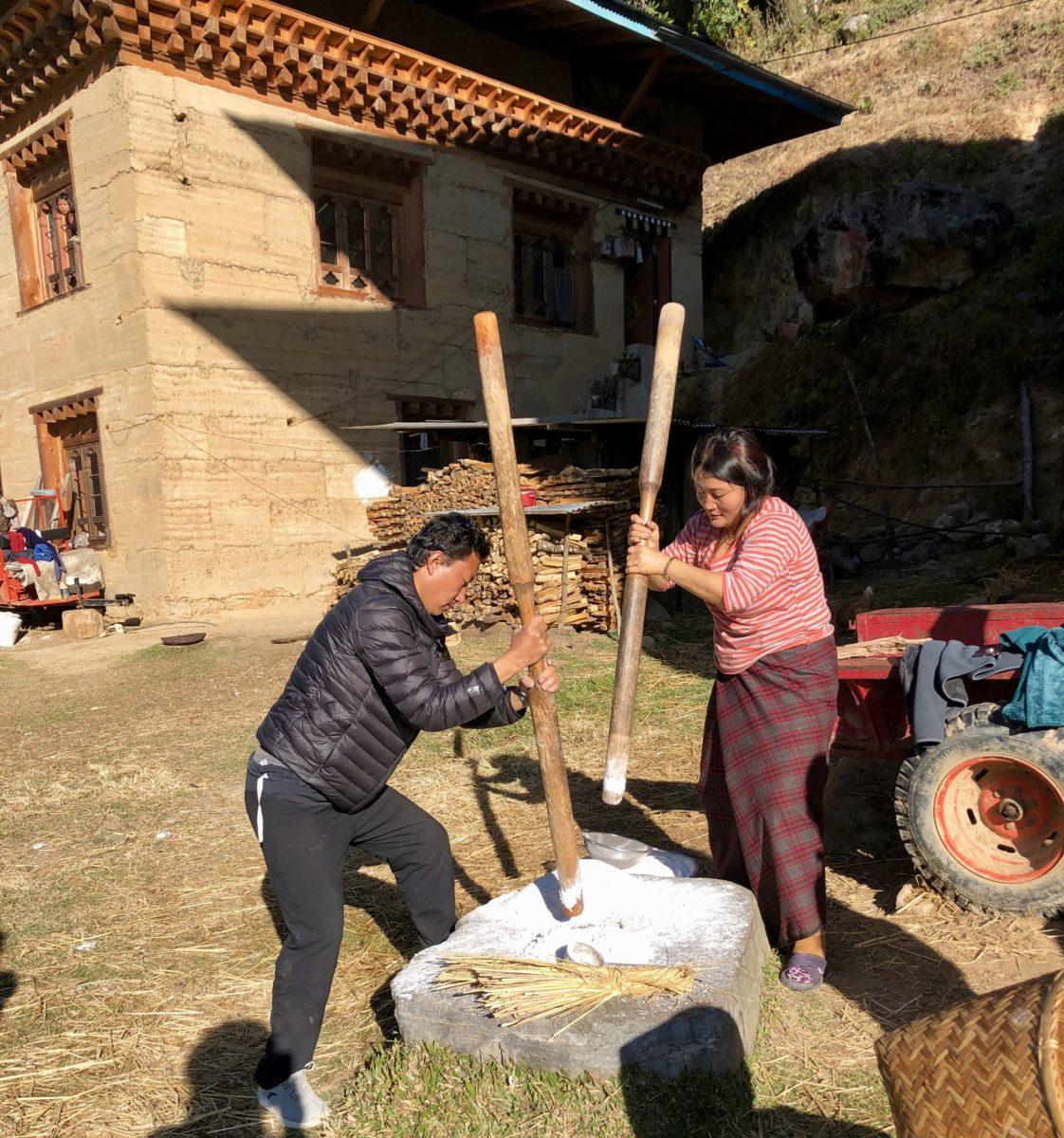
The first order of business is to grind the rice into flour. Two poles, two strong people, and a hole in a rock is the traditional way to grind rice flour. Then it is put through a sieve. This fine rice flour is used to make Makku treats and altar decorations called “Torma”.
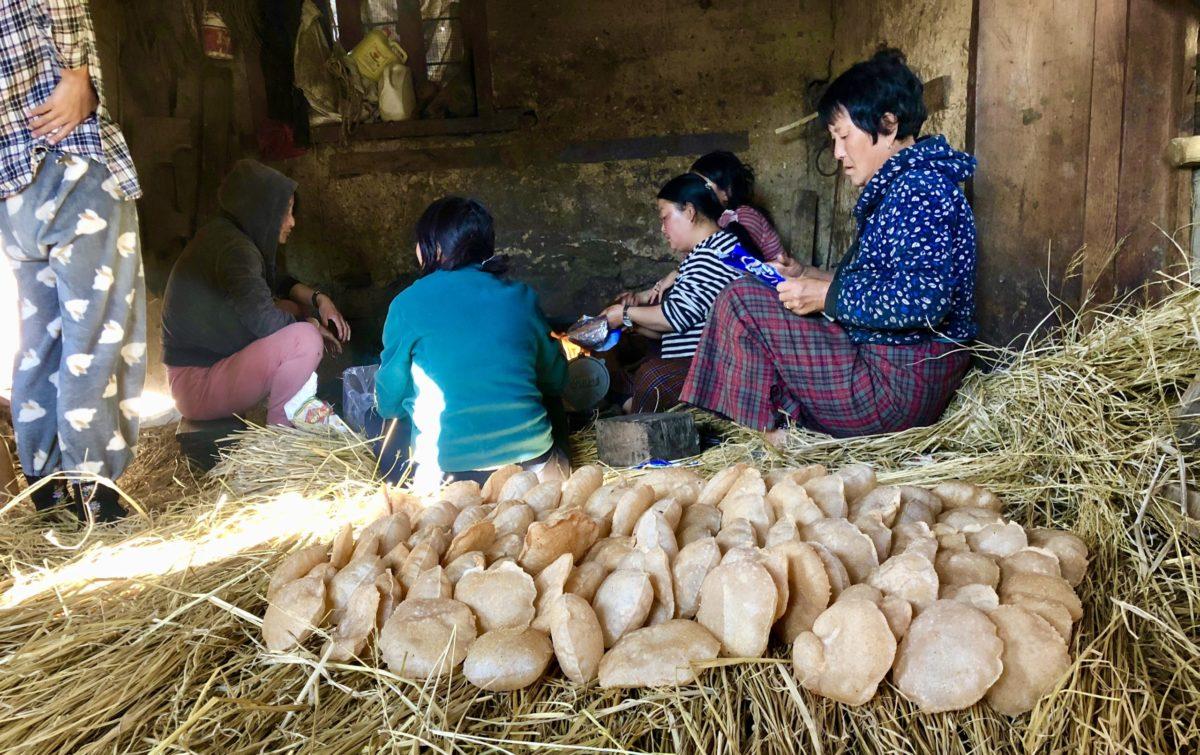
Today the cow stable was completely cleaned out and prepared for making festive treats. These are Makku, traditional rice flour delicacies that puff up like puri in the hot oil. This year we used no GMO soy oil in anything. Instead we used mustard oil for the food, and rice bran oil for frying the Makku. No one got sick, and no one got the mysterious “coughing cold”.
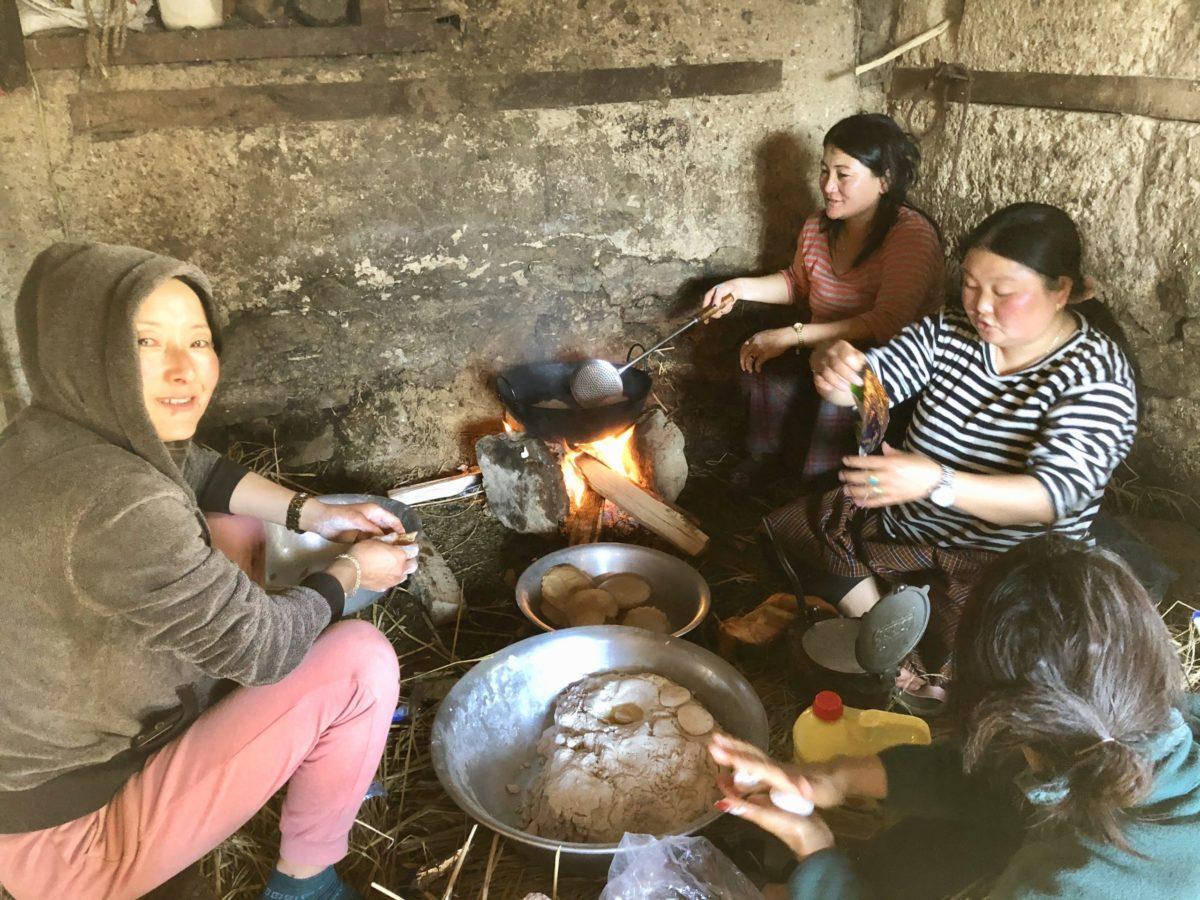
These ladies worked for an entire day making hundreds of Makku, in a family production line in the newly cleaned stable.
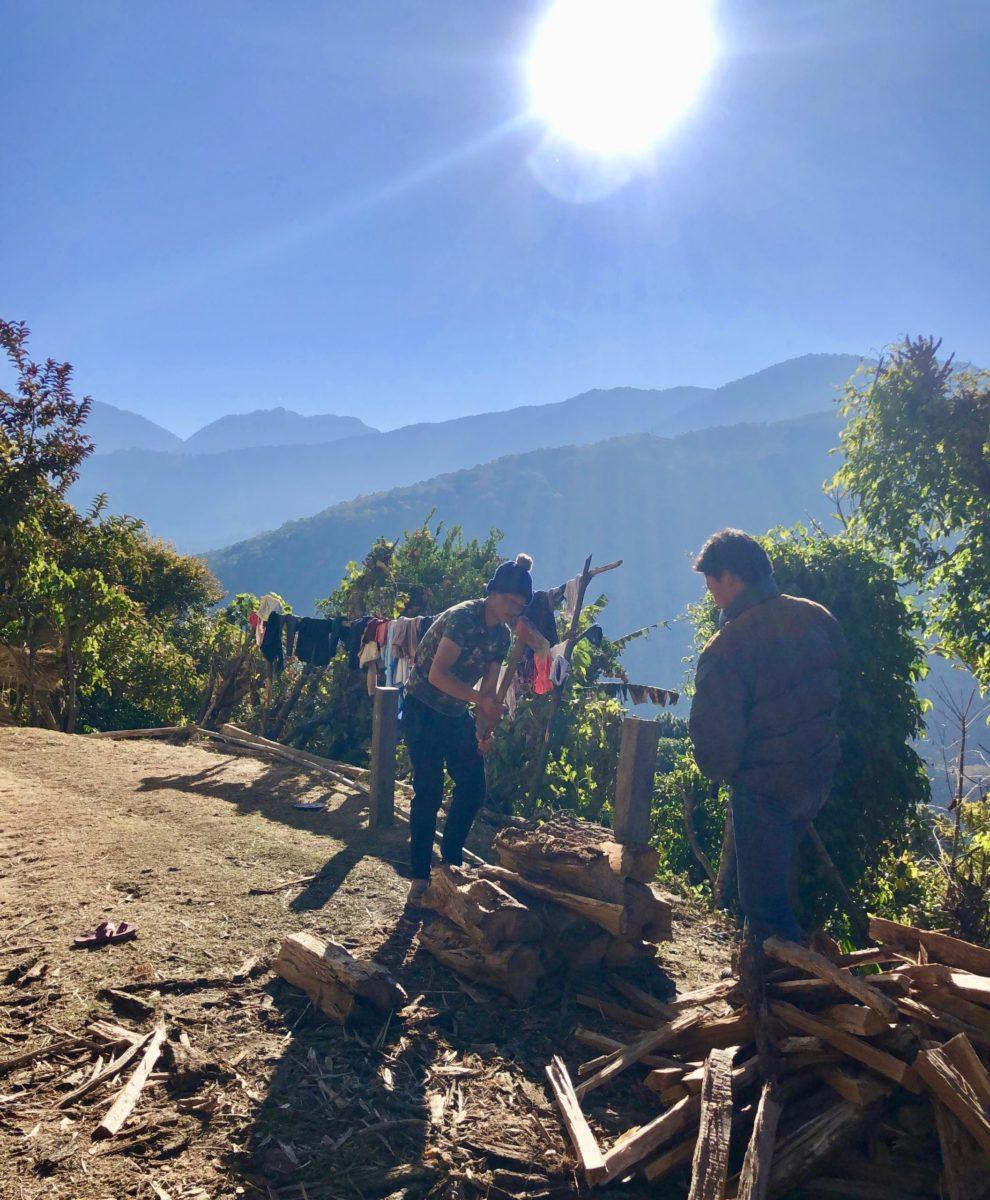
My cousin Phuba Namgye and his friend chop wood for the fireplace which keeps the house warm.
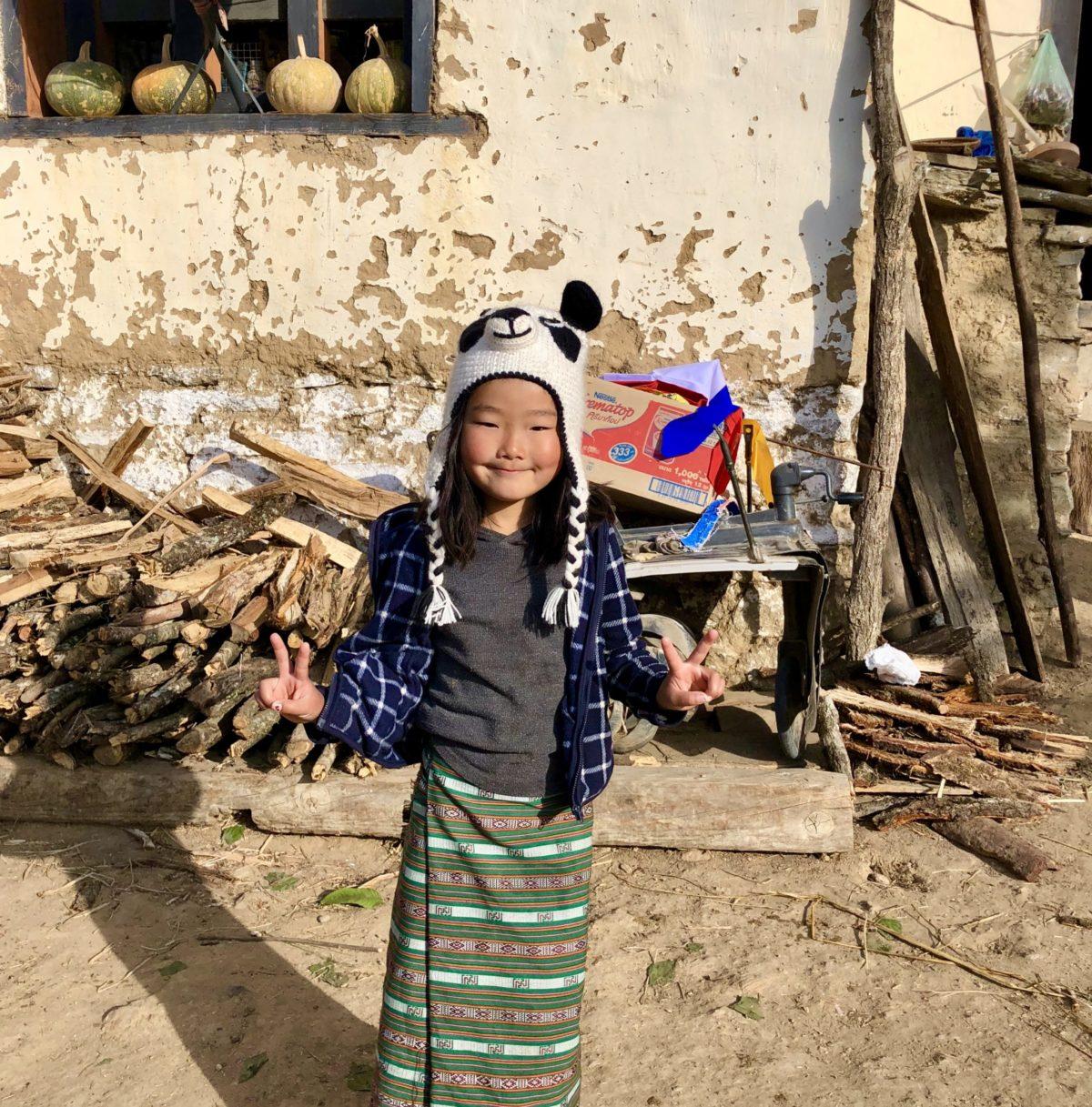
My niece Pari shows off a hat that I bought for her at Montanita Grocery in Santa Fe.
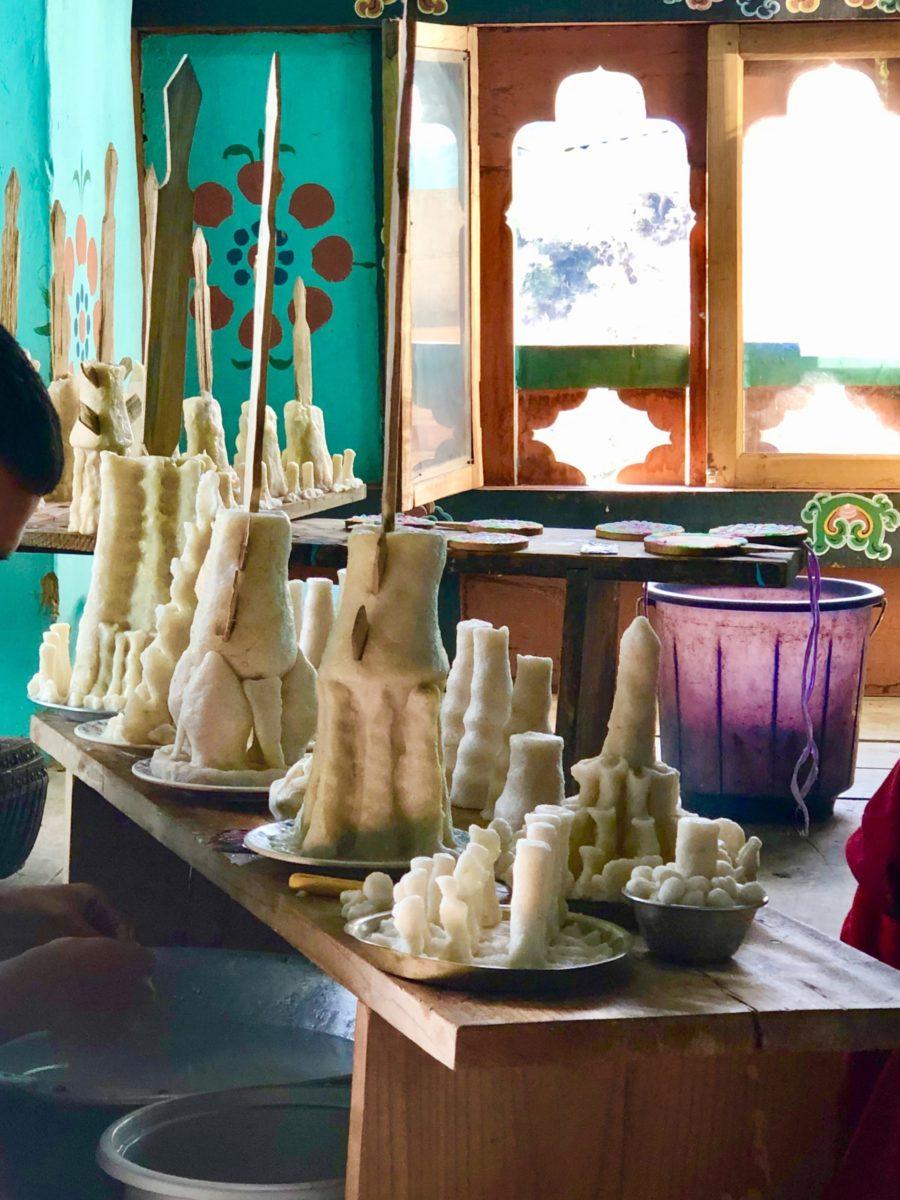
Rice flour structures called Torma are built by the monks to adorn the altar. Soon they’ll be hung with colored disks.
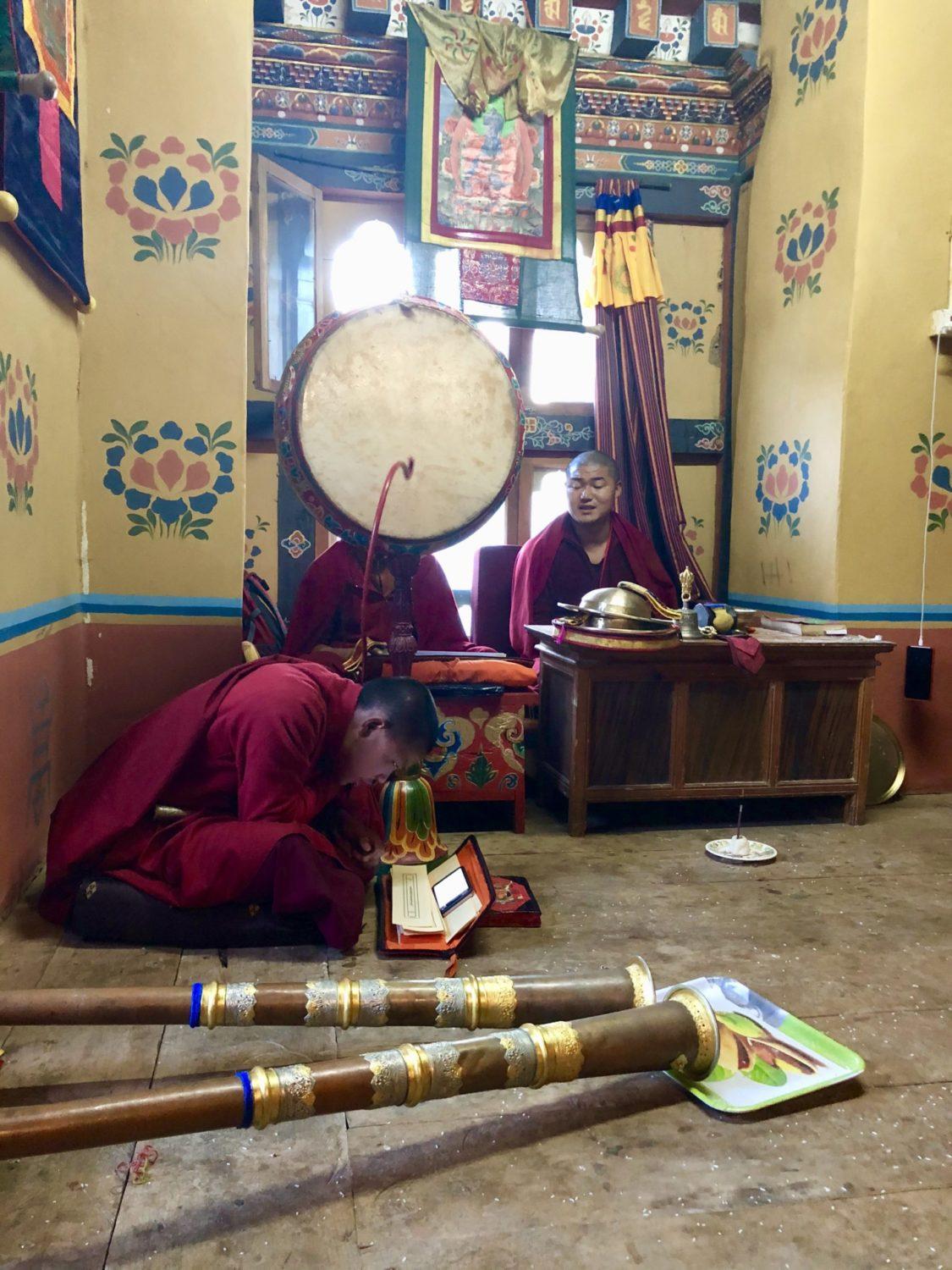
In the shrine room of the farmhouse, Lama Dorji leads the monks in chanting for three days. The monk on the left follows the chants reading Dzongkha on his cell phone, in addition to the traditional calligraphy book.
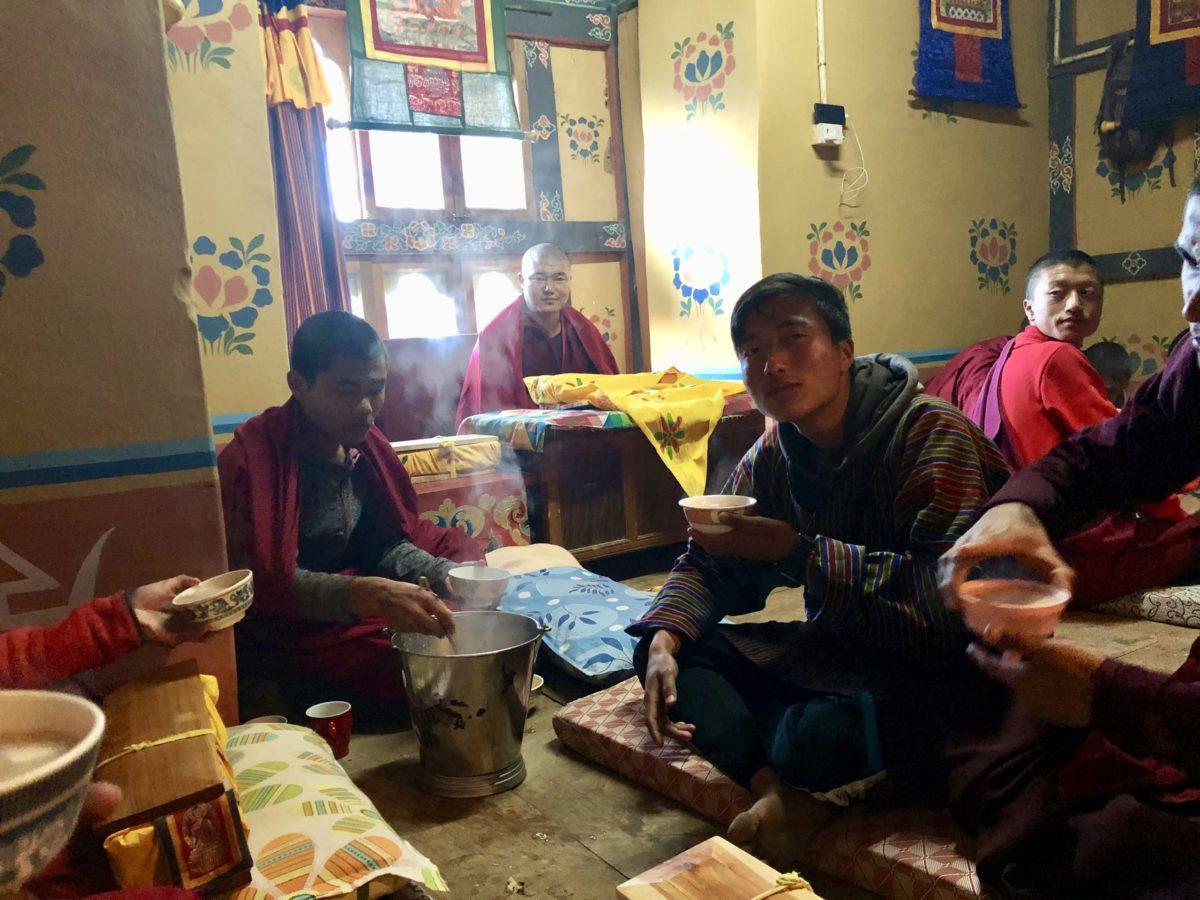
These monks make me laugh. When I walked into the shrine room to do my morning meditation with them they were already chanting in full swing. They didn’t miss a beat, but I heard through the Dzongkha words everyone sing “good morning, good morning”. After a while they took a break and we shared hot rice porridge. Yummy!
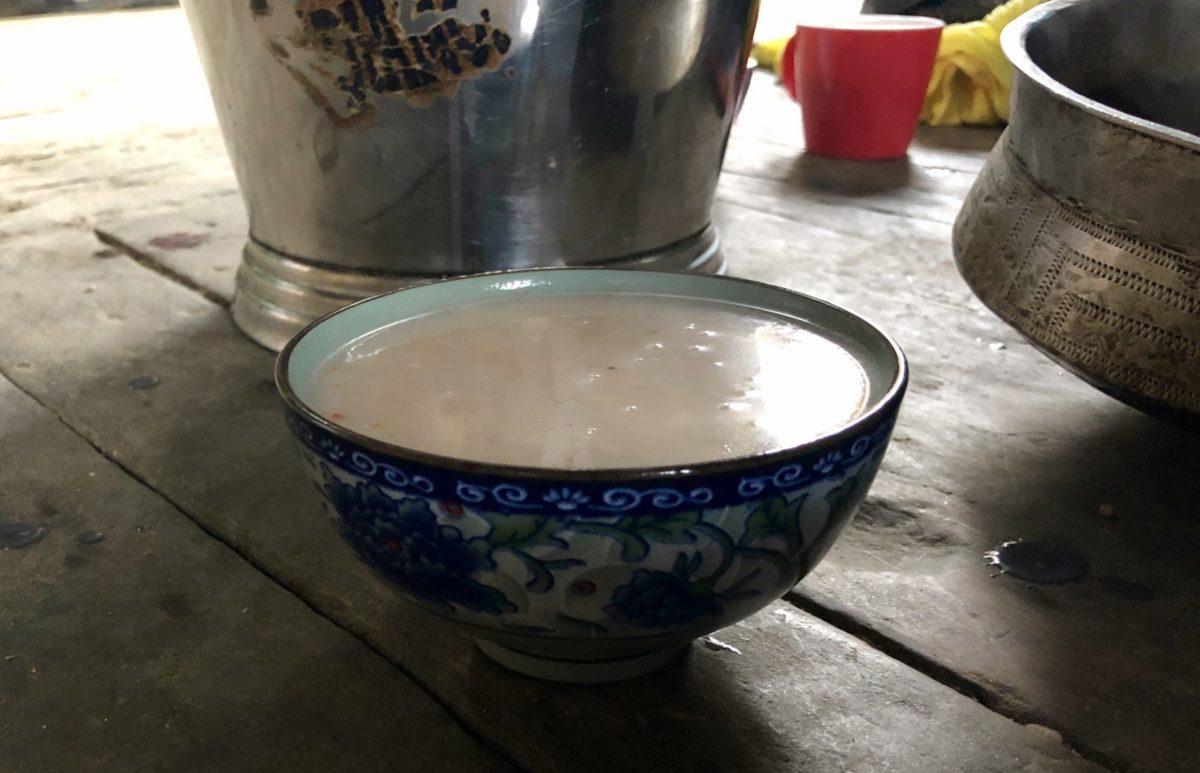
Rice porridge is a delicious special occasion treat, made of coarsely ground red rice cooked with ginger, yak cheese cubes, and sometimes meat.
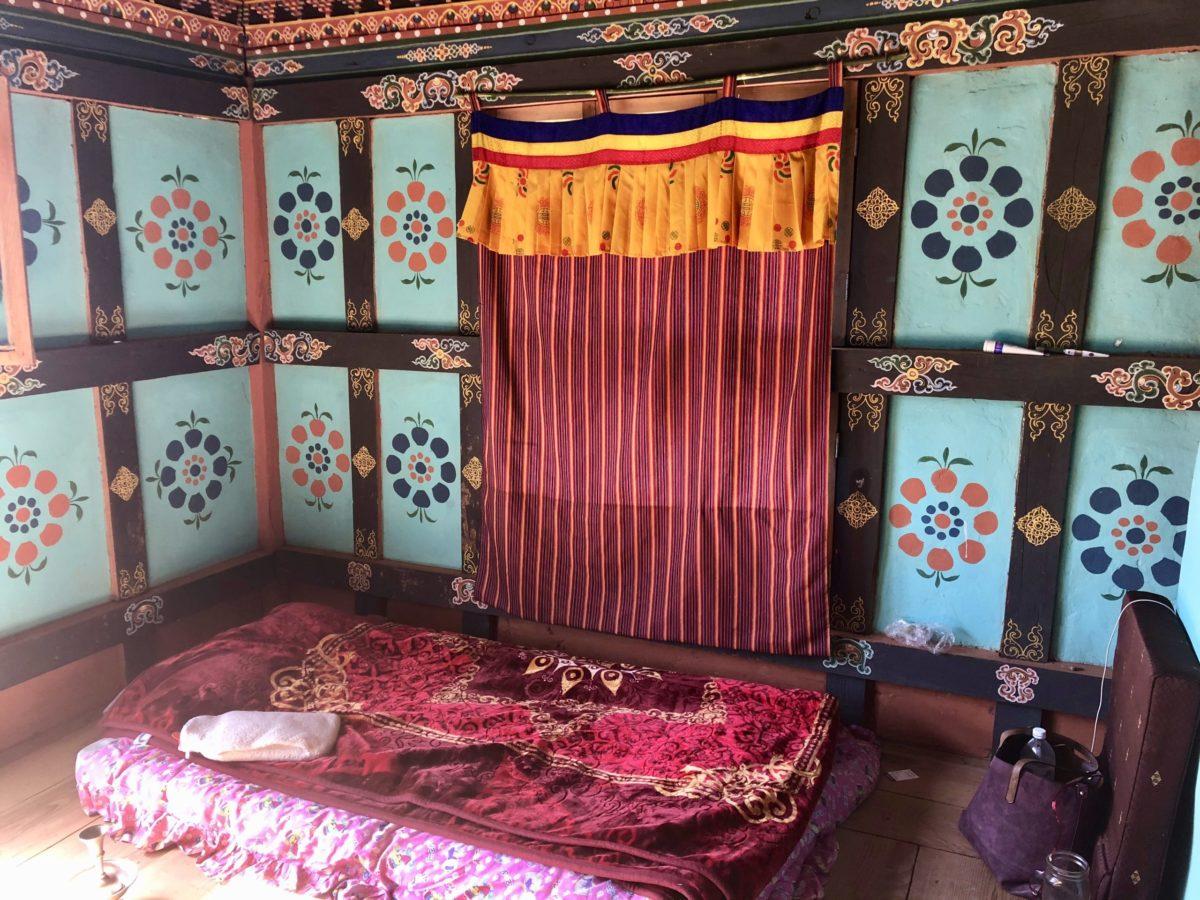
This is my bedroom on the second floor of the huge farmhouse. I got the best room, truly luxury quarters with a soft foam mattress and cozy comforters. The room is beautifully painted on walls and ceiling. My hot water bottle keeps me warm on chilly nights.
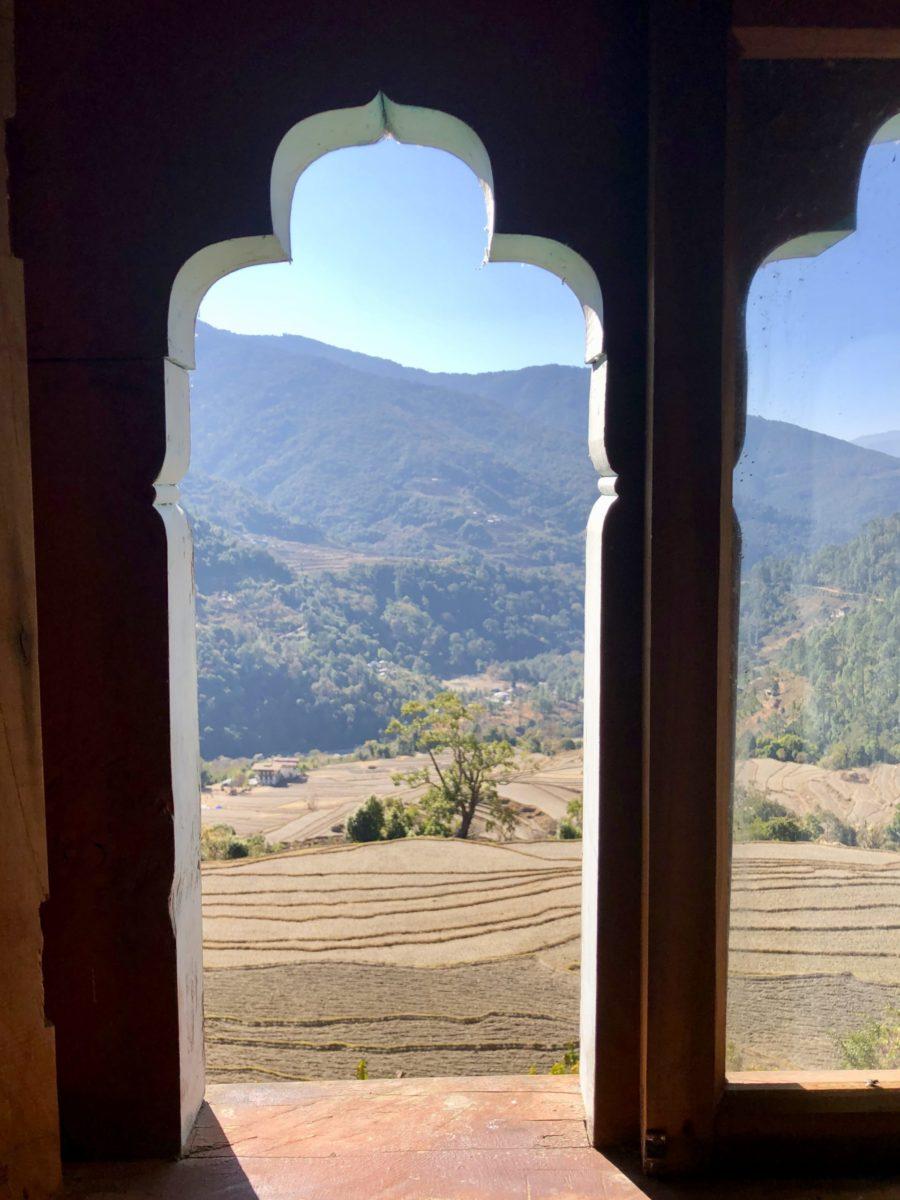
I wake up to this eye-popping view of the mountainside and layered rice fields.
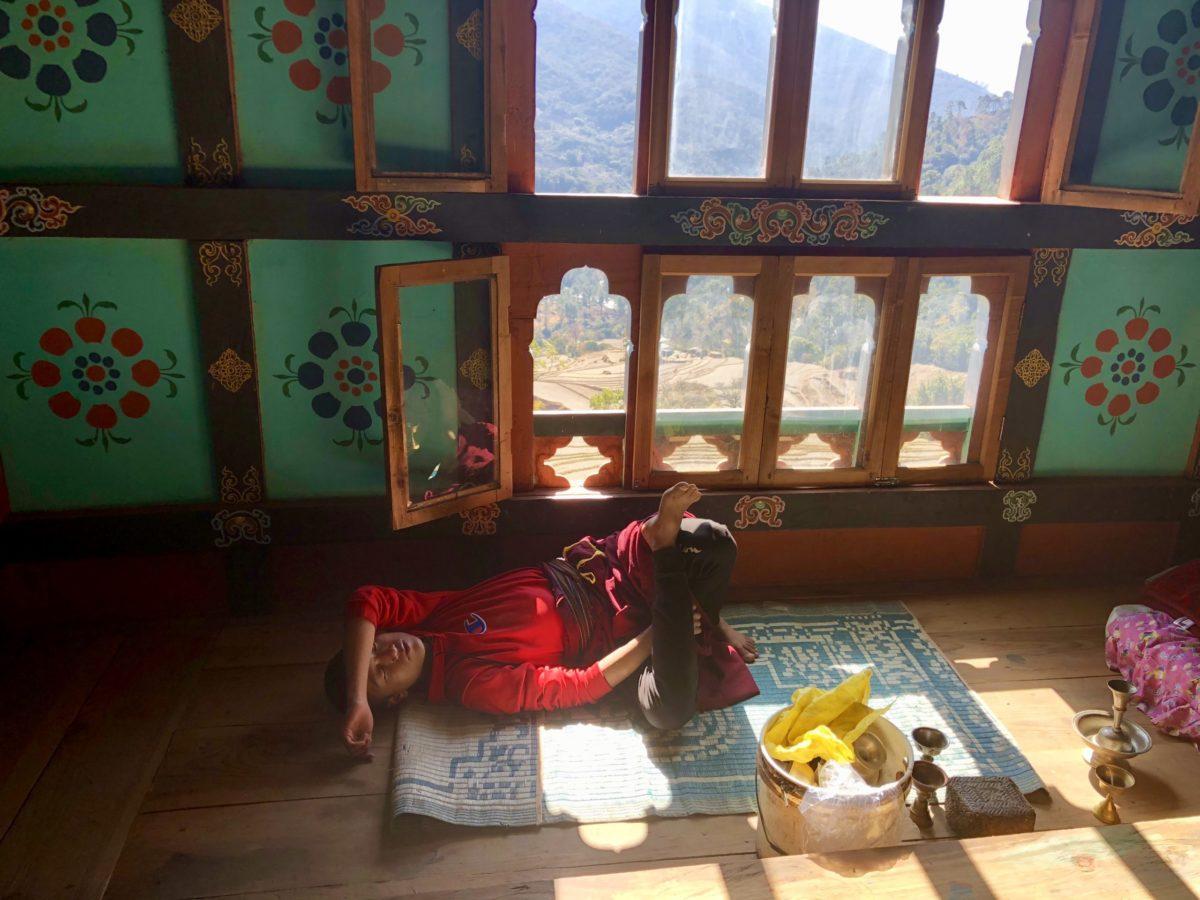
Today this monk was sacked out for a nap in my bedroom. It’s quite exhausting work at a family puja. There’s so much to do – chanting, tormas, butter lamps, fruit, and many preparations.
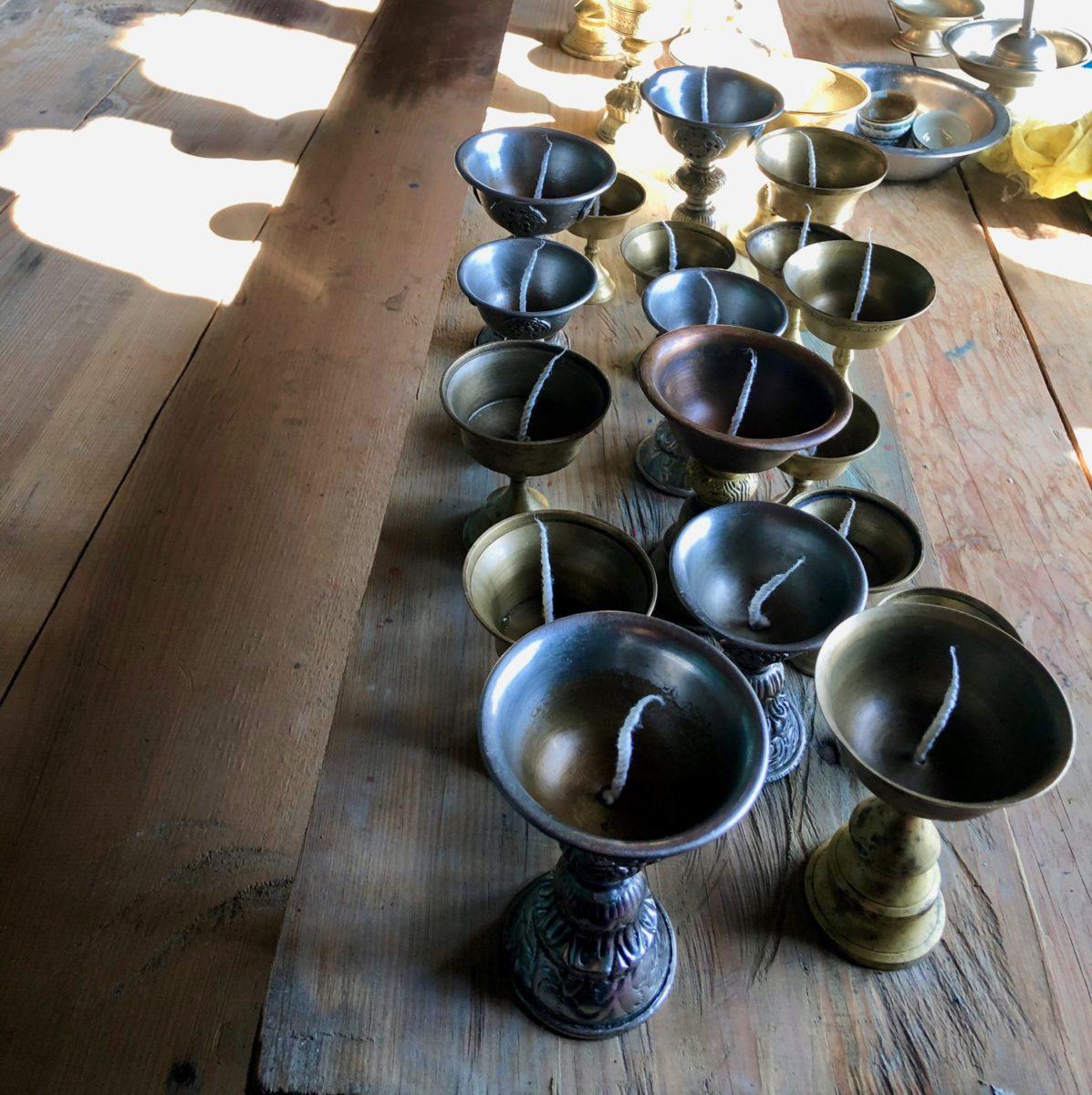
The monks prepared these wicks for butter lamps in my bedroom. Soon they will be filled with melted yak butter.
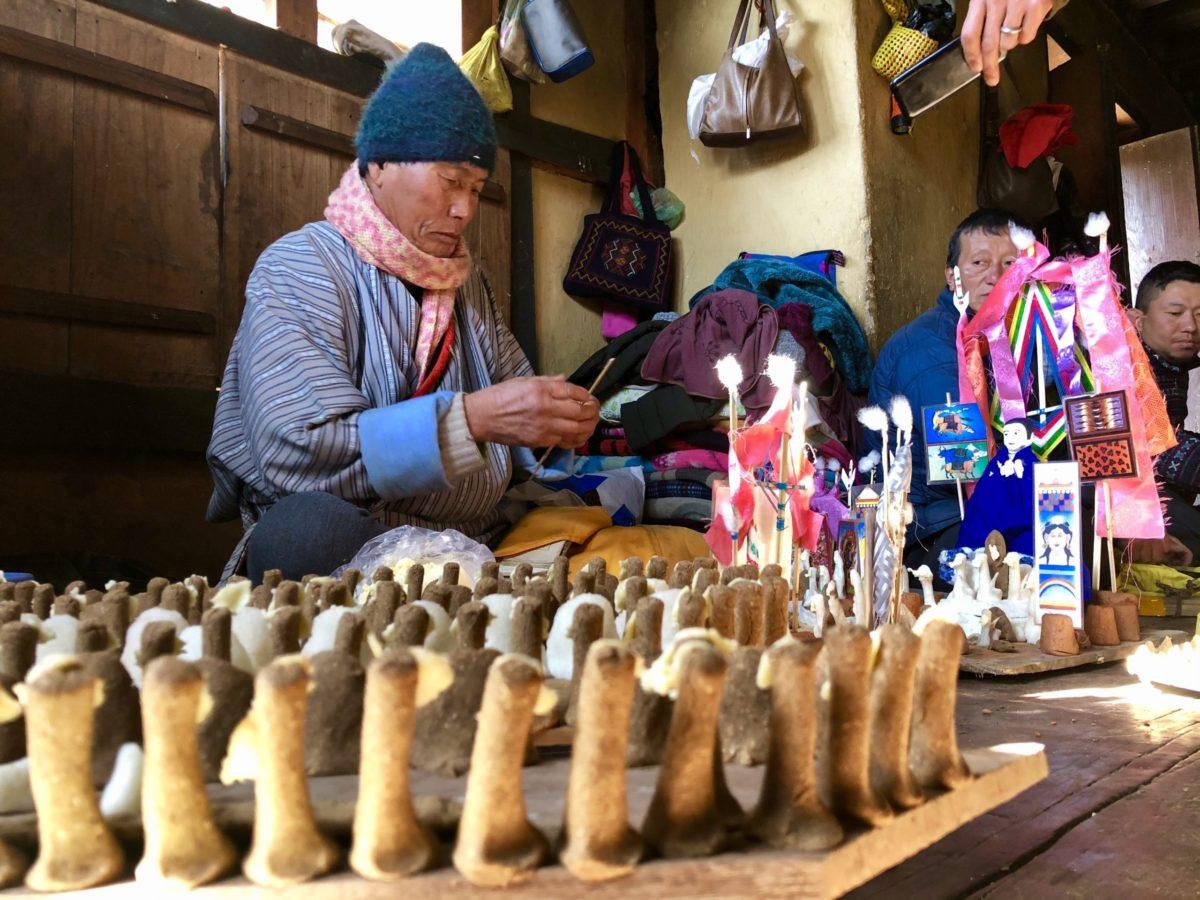
This year the family is doing an additional puja for the long life of our grandmother, Rinchen Bhida’. She is 98 years old, and doing amazingly well. This is a local shaman preparing clay figurines and an altar for her special long-life ceremony.
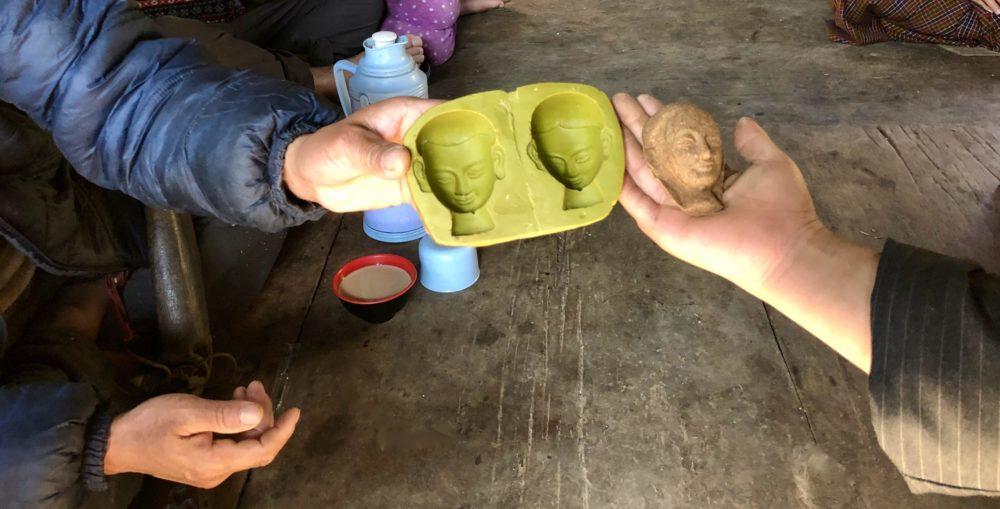
The long life puja includes making an image of the body and face of the person receiving the blessings. They’re using special molds made of plastic and wood.
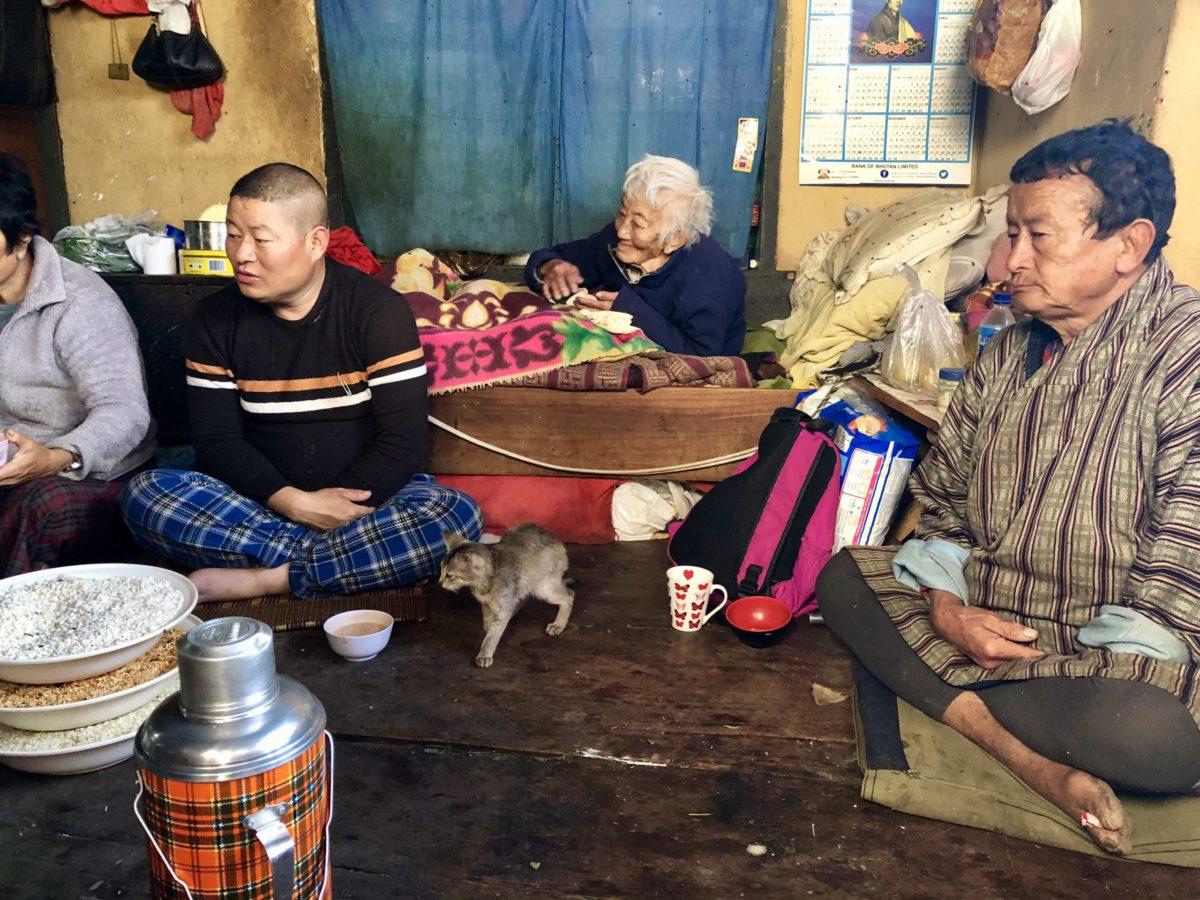
Grandmother Rinchen Bhida’ is 98 years old, and the root of the family. She is active, vital, and able to converse, that is if you speak Dzongkha. Fortunately the children translate for me. Everyone loves her and sits around her. She doesn’t walk well, but she’s wide awake and participates in every exchange.
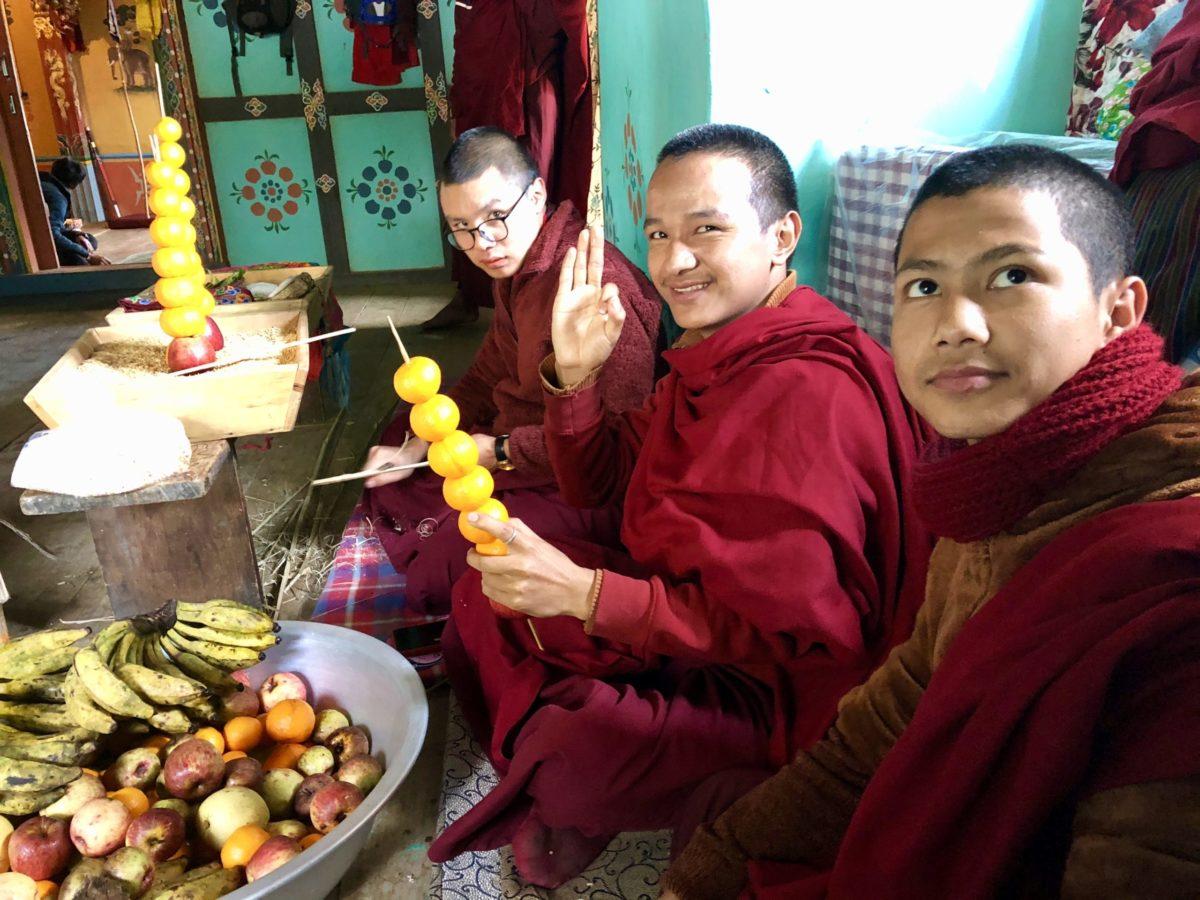
Some of the monks prepare altar offerings of fruit. This year we bought only Bhutanese unsprayed fruits and veggies.
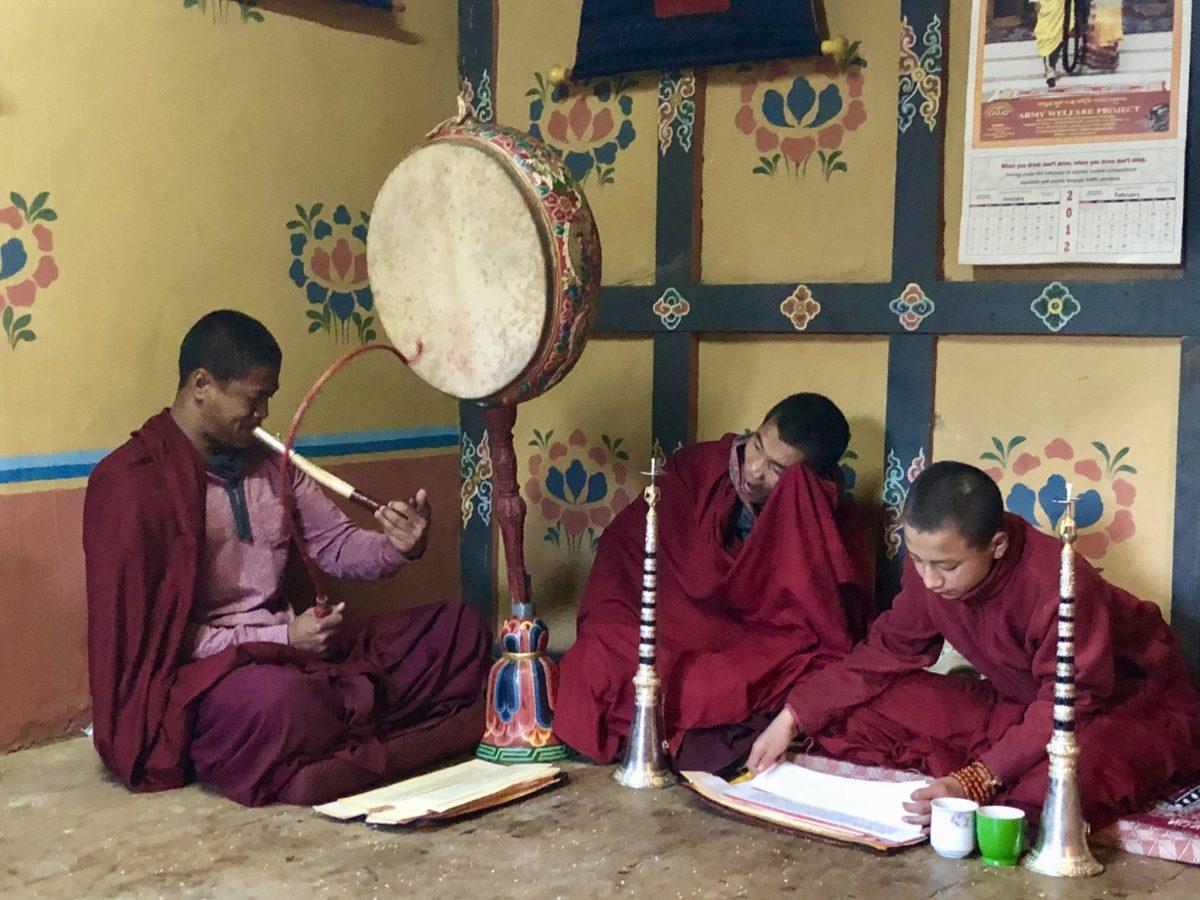
The monks continue chanting and drumming from 7 am to 7 pm, with breaks for meals and tea.
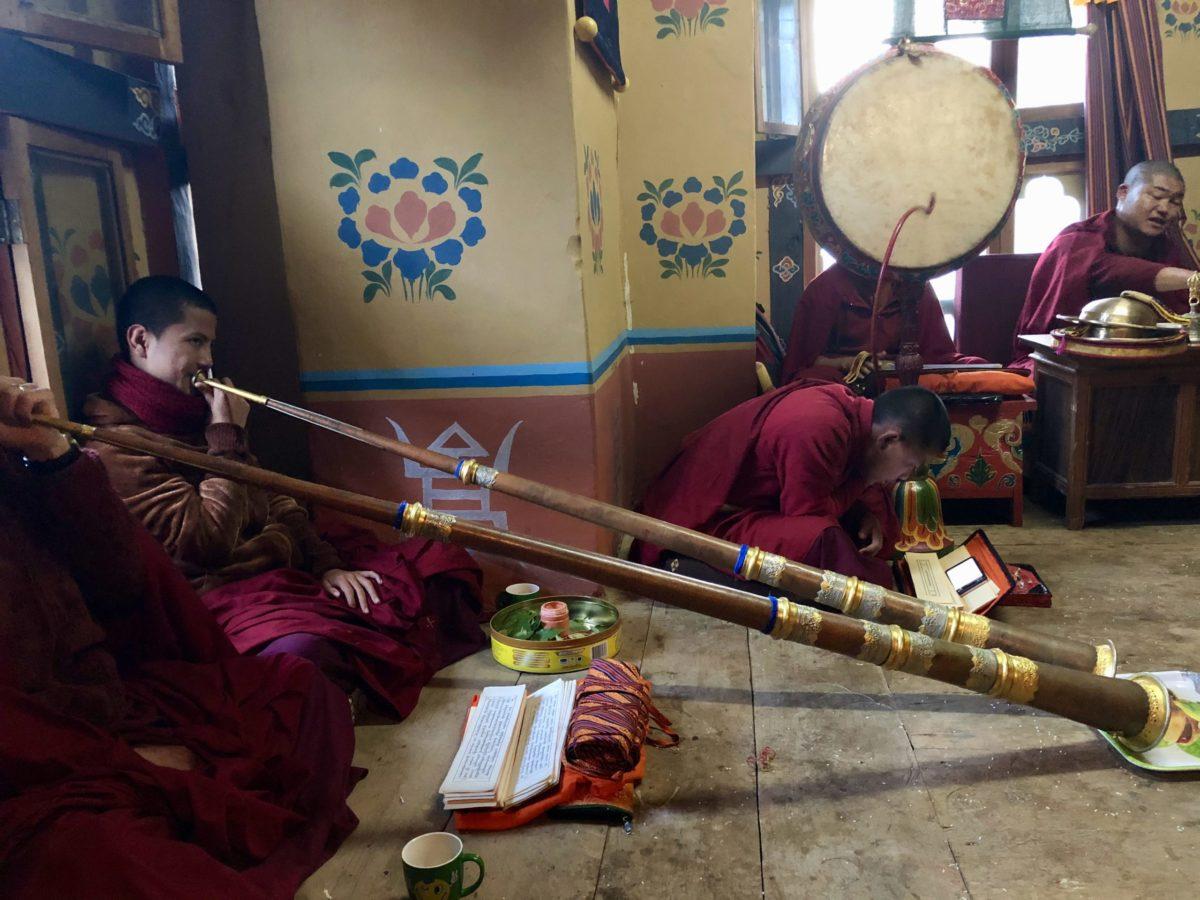
The monks chant to offer blessings to the family for the next year. Prayers bring financial wealth, happiness, and spiritual fulfillment for everyone. This goes on all day.
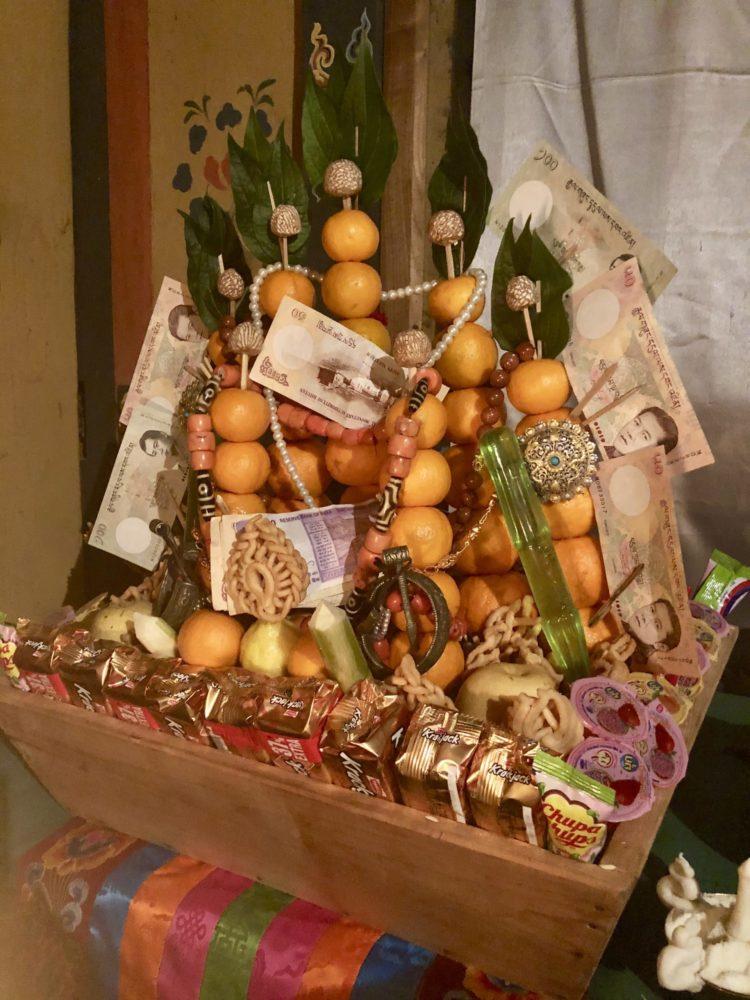
The altar room is decorated with fruits, treats, goodies, jam, money, jewels, and blessings.
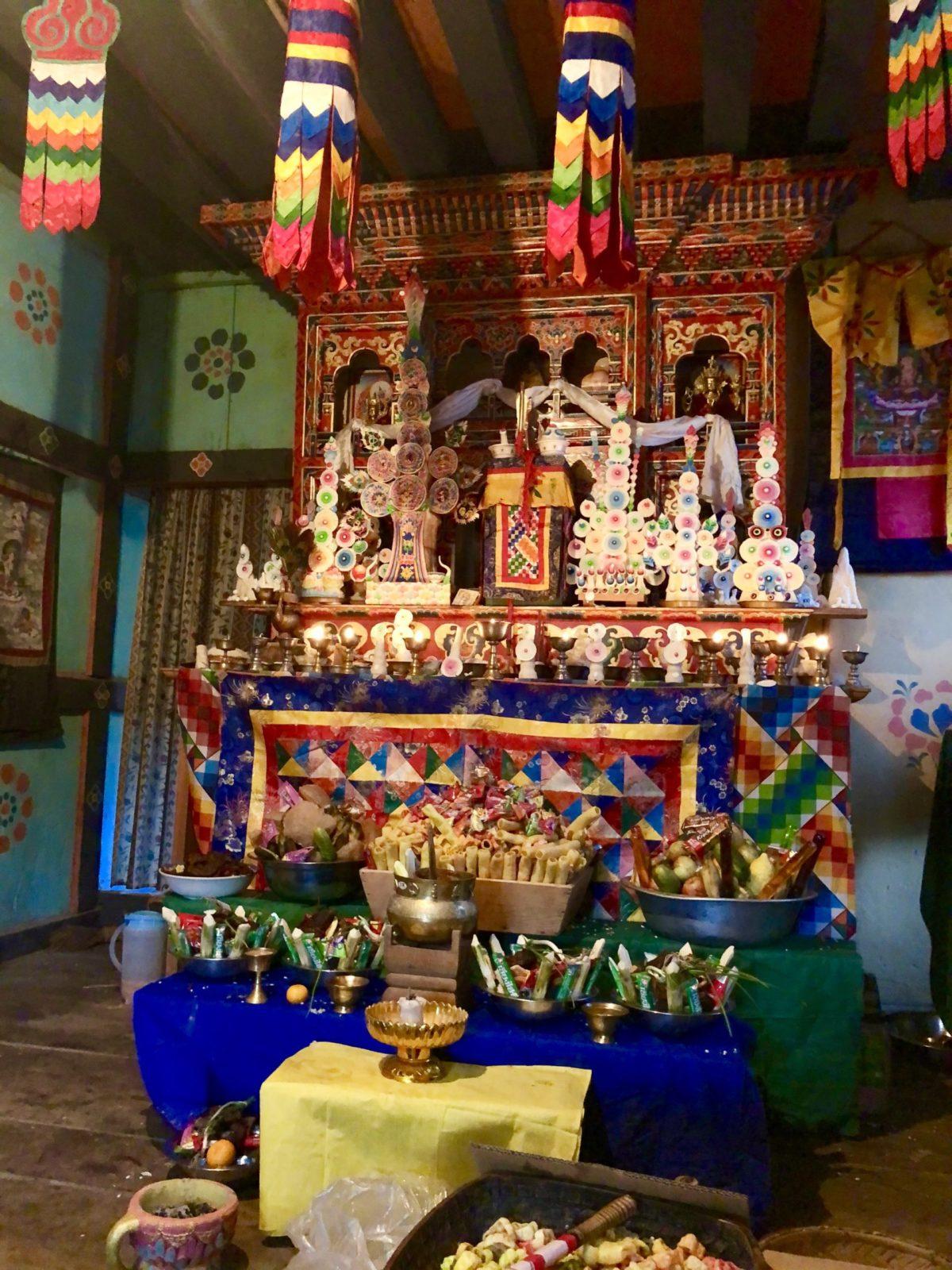
The altar Torma pieces are finally finished, treats are laid out, and the ceremony begins. Everyone comes into the shrine room and does three prostrations in two directions.
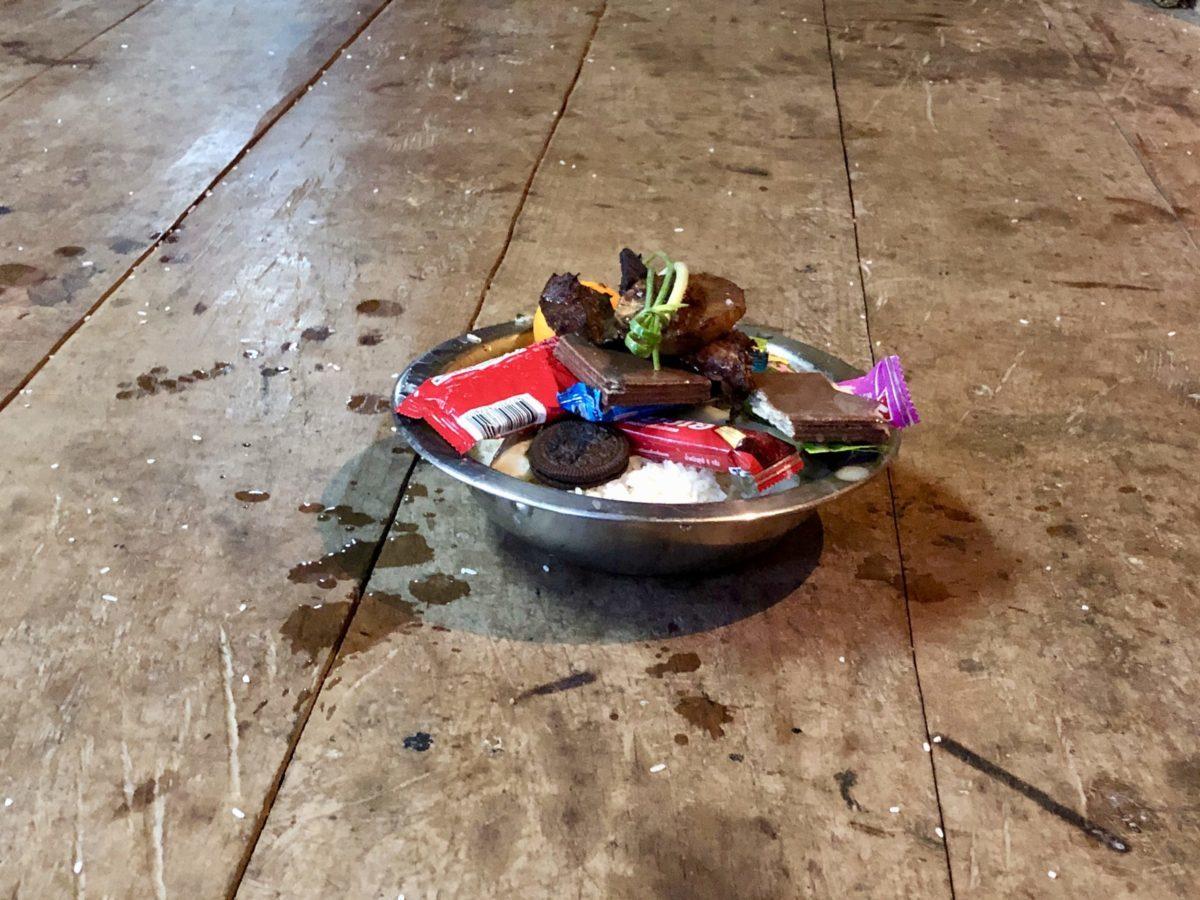
Traditional gifts for the puja include rice, sweets, chocolate, and fruits. The final chant includes throwing rice on every stanza. Soon there’s rice everywhere all over the floor.
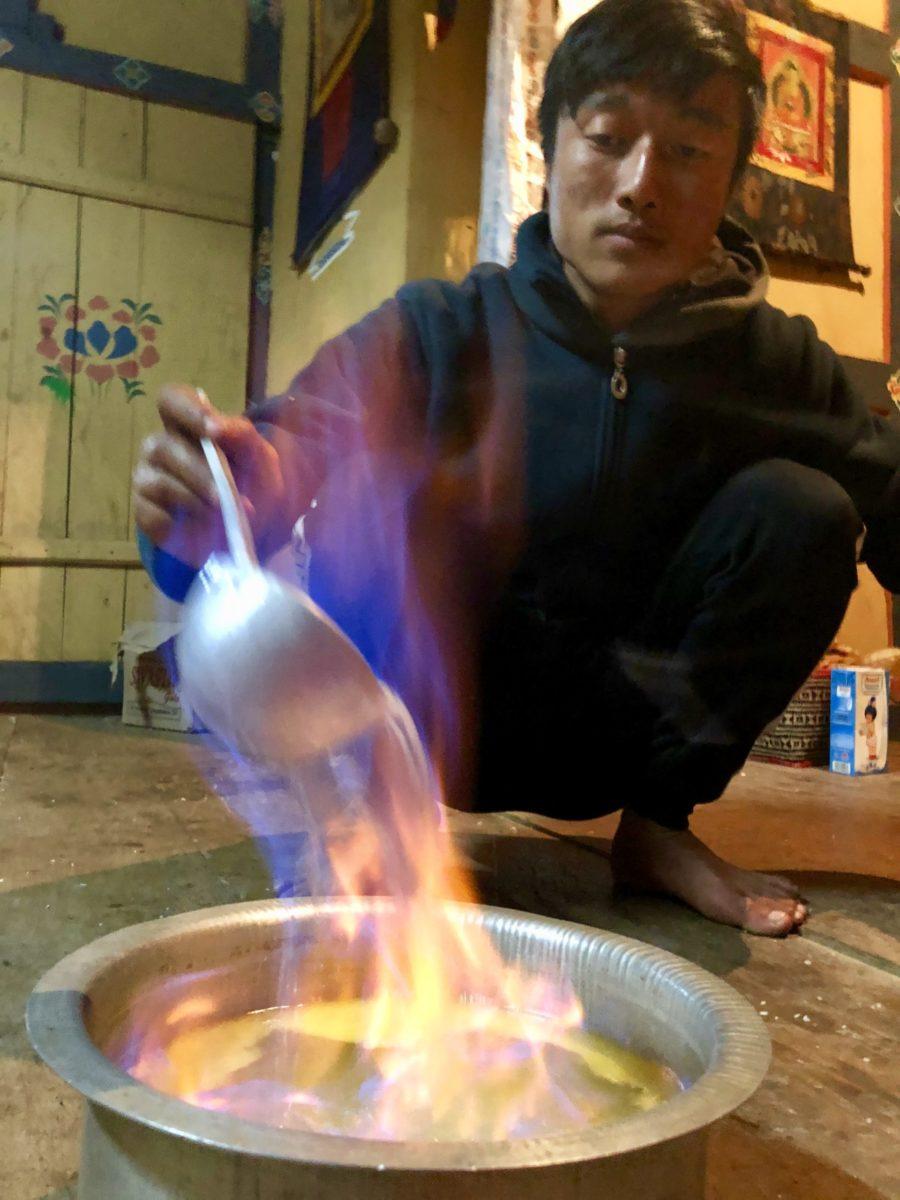
My nephew lights a pan of Ara, a homemade alcoholic booze made of wheat and rice. He passes it around for everyone to feel its blessings, and we take a little taste. Pretty yummy!

After the puja my sisters Thujee Zam and Pem Lham ask for a selfie photo.
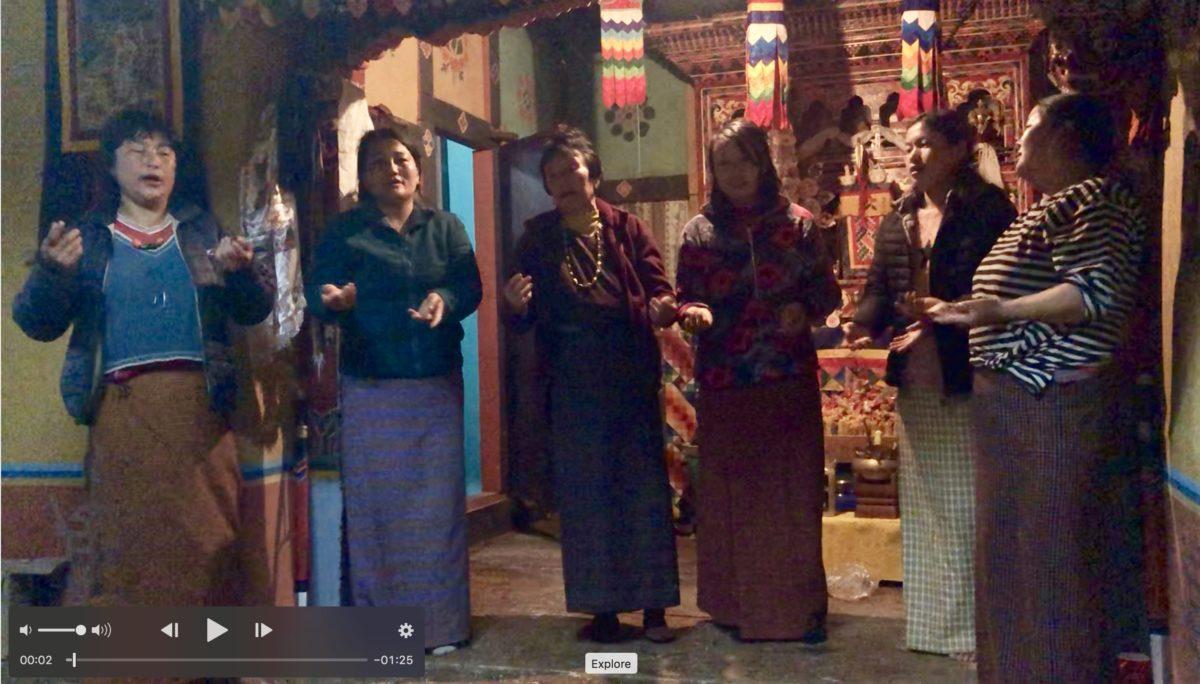
When the puja is over, it is traditional for women to offer a song and dance to the presiding Lama in the family shrine room. He sits and accepts the offering of gratitude. This dance was particularly beautiful to watch.
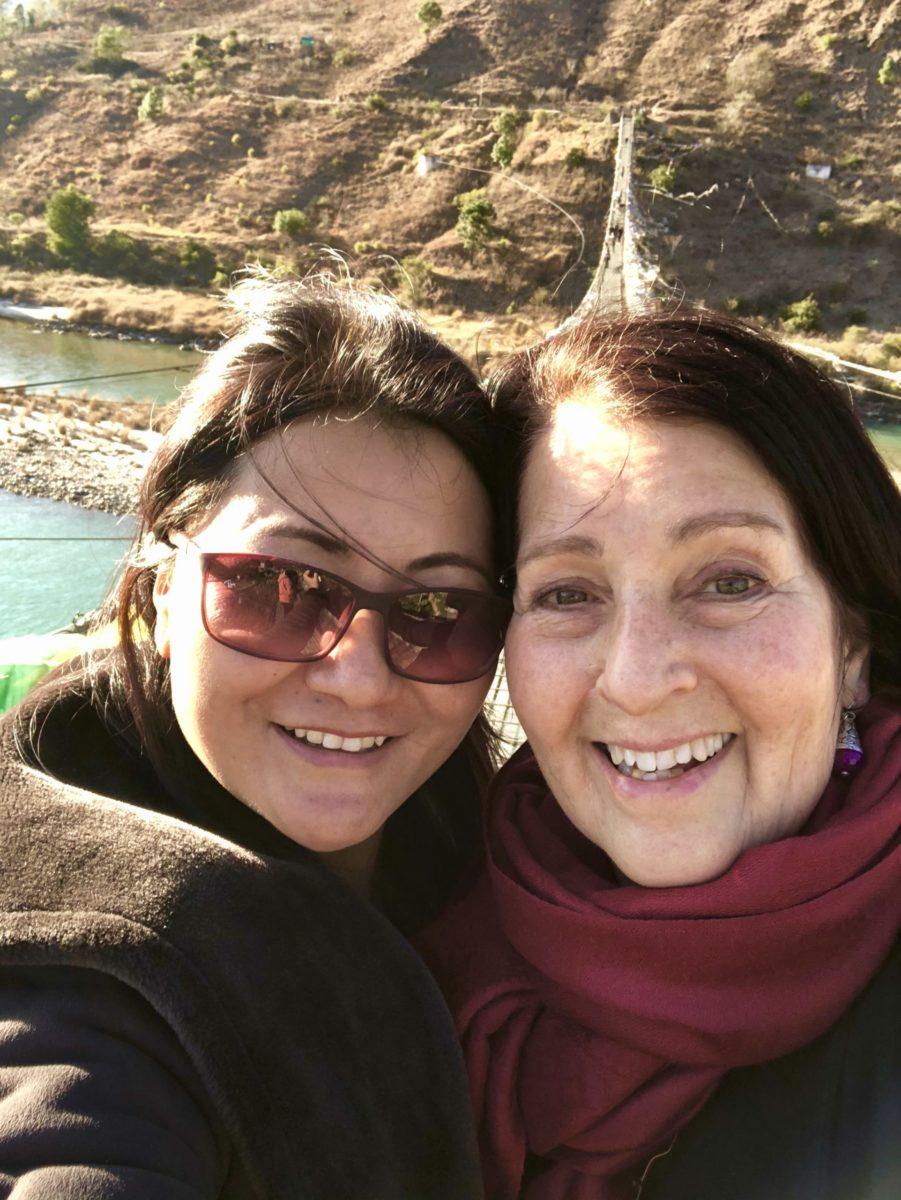
Near the family farm is one of Bhutan’s longest suspension bridges over the Punakha river. My sister-in-law Pem Lham and I take a walk across in the wind.
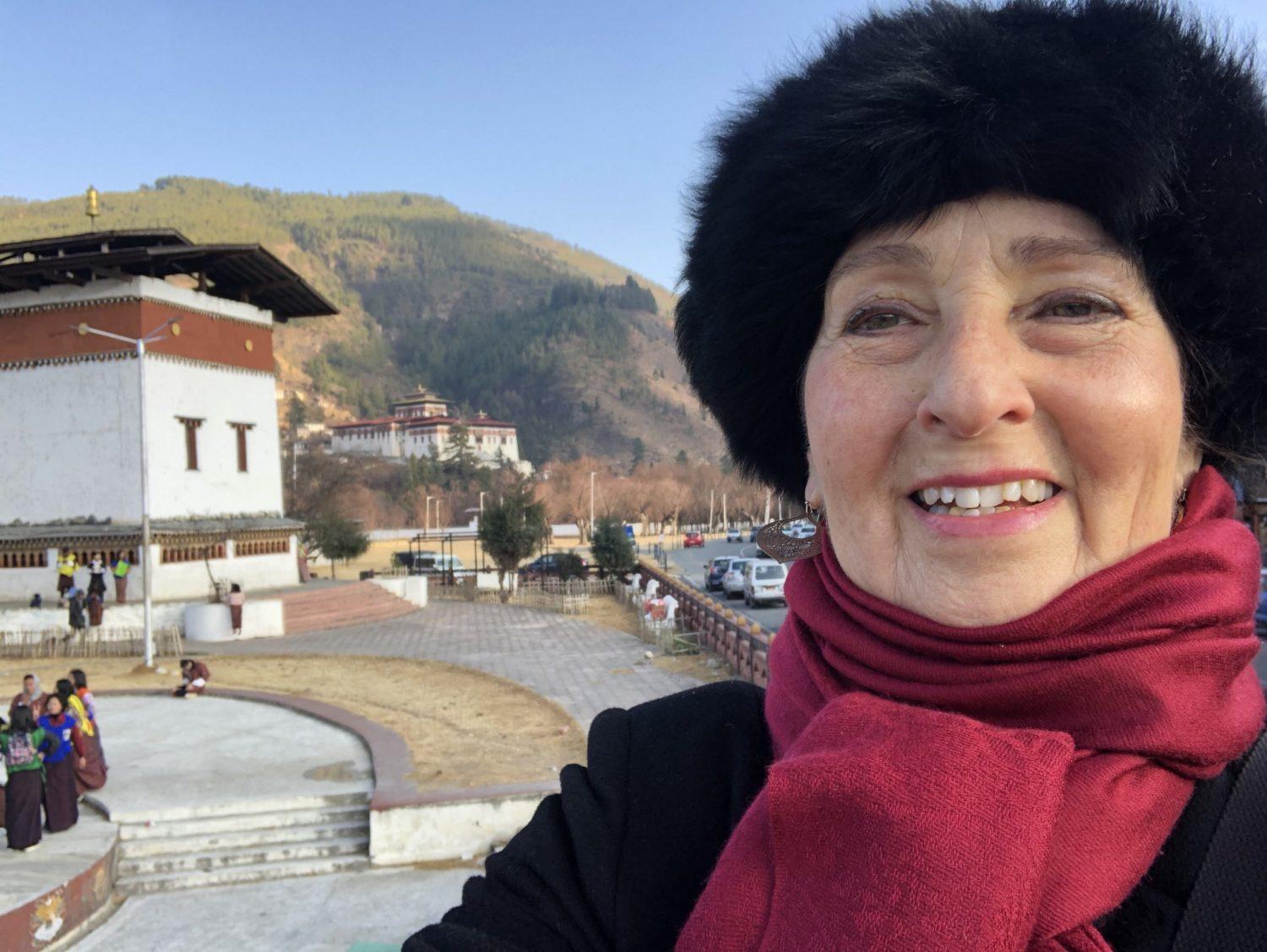
Now I’m back in Paro. I’m staying at a friend’s hotel, working on my books, preparing a video for my agent to send to prospective publishers for my six books. Today I’m working on memorizing the text. This is the backdrop we’ve chosen, the Rinpung Dzong, a 12th-century fortress and monastery. Wish me luck!
Thanks for checking in! Next week I’ll be finishing the manuscript for “Heal Your Past Lives” book, and I’ll finish the video for publishers. One step at a time. Warmest best wishes to you! Srijana


